How to Calculate Outboard Motor Size for Sailboats
It seems so complex to pick the right engine size for your sailboat. I was done with complex calculations and tried to make it easier here.
How to pick the right outboard motor size for your sailboat? To get the right amount of horsepower needed to efficiently propel a sailboat, divide the displacement of the boat (in lb) by 550. You need approximately 1 HP per 550 lb of displacement or 4 HP per 2200 lb. Most sailboats don't need a motor with more than 30 HP.
In this article, I'm talking about small outboard engines for sailboats. We're talking about displacement hulls here, so in other words: keel boats. They need more power than flat bottoms.
But they're not powerboats - so it's not our mission to go fast. It's our mission to get decent speed, good control over the boat, and the best possible fuel efficiency. Without breaking the bank of course.
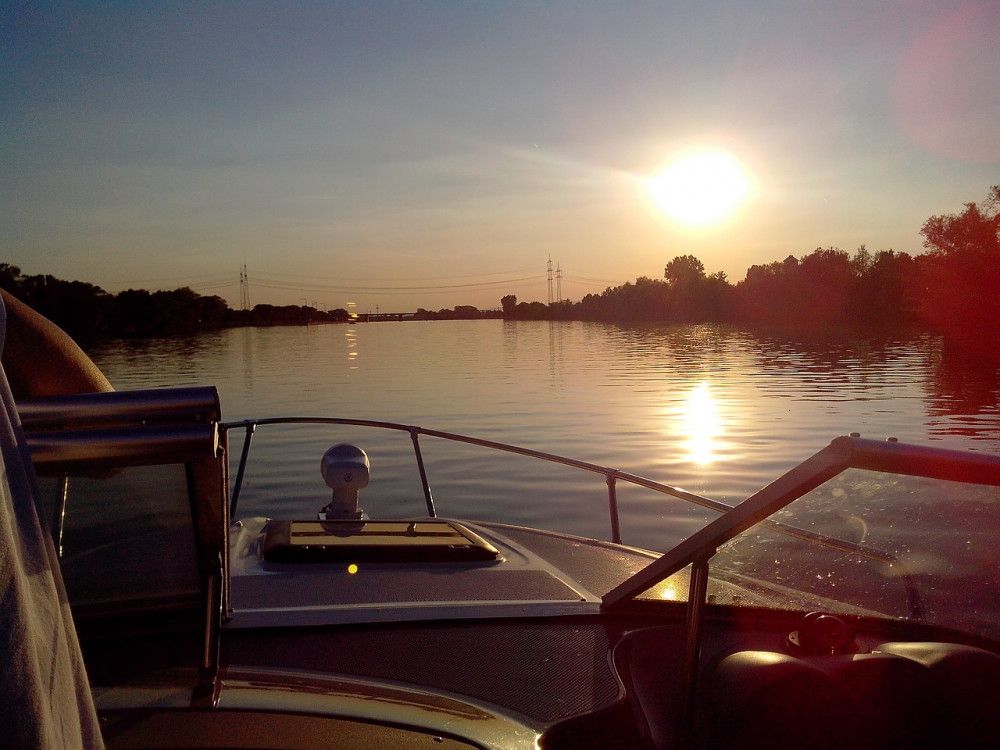

On this page:
How to pick the right motor size, other factors that are important for size, why is the right motor size important, is there a max hp for sailboats, in conclusion, related questions.
Sailboats need way smaller engines than powerboats. That's great news (unless your ultimate goal is speed), because it's cheaper to buy, cheaper to drive, and cheaper to maintain.
The amount of power you need is related to the hull displacement of your boat.
I like to use the simple formula:
HP = displacement (lb) / 550
So 1 HP for every 550 lb displacement, and 4 hp per 2200 lb.
Here, HP is the amount of horsepower you need to reach the maximum hull speed. This is in optimal conditions. So you have smooth water, no windage, a clean and polished hull, and so on.
If you want to get it absolutely right, you also need to correct for propellor size. And of course, a lot of other factors come into play (more on that later). But generally, these engine sizes will work with the following weights:
That sounds about right to me. But remember that these are all rough estimates: I just try to give you a ballpark figure. There is no one formula to get an exact number. The hull design, sailing conditions, and your personal preference are all very important.
If you're serious about getting a new engine, I definitely recommend to get advice from an expert . But you know, salespeople always recommend the Turbo version. Remember that you don't have to overpower a sailboat. Usually you don't need anything over 30 HP. So at least you now know what will work on average.
What is hull displacement?
- Hull displacement is the weight of the boat, or the amount of water the boat displaces.
- Maximum hull displacement is the weight of the boat when it's fully loaded, including crew.
The weight of the boat is the same as its displacement, because the weight of any object is exactly equal to the weight of the water it displaces (aka: pushes aside). This is called Archimedes Principle.
The weight slightly differs in saltwater from freshwater, because saltwater is heavier. In saltwater, the boat gets a bit lighter. So in theory you can use a smaller engine for a bluewater boat, but in practice this is offset by the stronger current and wind.
How to find the displacement of your boat?
Most manufacturers simply give you the displacement of your boat. If you can't find any data, because, for example, you own an old boat, you can weigh your boat on a truck scale. You can also haul it out and measure it (which is painstaking work).**
Tip: if you're gonna weigh your boat, simply drive it onto a truck scale, and retract the weight of the trailer from the total weight.
Of course, it's not so simple. This formula gives a rough estimate. But for me this was way clearer than all that black magic that I get when I ask people what size engine I should get.
Let's look at the things this formula doesn't take into account.
2-strokes are more powerful than 4-strokes. Two-stroke engines fire once every revolution and four-strokes fire once every other revolution. This makes the 2-stroke twice as powerful. They provide more torque at a higher RPM. But they also wear more quickly. The 4-stroke will last you a lot longer, and its also more fuel efficient.
The right propellor size is just as important as having enough horsepower. With a smaller prop diameter, it has to work harder to generate the same propulsion as a larger diameter. But you can't just go larger always. The prop affects the RPM of your engine, and you have to get in the right range (more on this later). You also have to check the maximum diameter that fits your boat.
Diesels have more torque, because the compression rate is higher than that of gasoline engines. So if you consider a diesel, you can do with less HPs.
High windage hulls (multihulls) need a bit more. A multihull (or larger hull in general) suffers from more friction because of the larger surface. So the engine needs to work a little harder.
If you sail longer distances under power , or against the wind it's a good idea to get a larger engine (but not too large). This helps you to save on fuel since you have lower RPM. Especially if you sail offshore or on open sea. The engine needs to work harder due to stronger wind and current.
If you're just sailing in and out of the marina under power, you may need less HP.
Smooth hull designs need less HPs than bulky hull designs, like the classic wooden clippers and crabbers for example.
It matters to get the right size outboard motor for a couple of reasons.
First of all: smaller engines are cheaper, so you save money on buying the engine.
Secondly: smaller engines use a lot less fuel, so you save money on using the engine.
Thirdly: smaller engines are cheaper to maintain: so you save money on maintenance.
So why not get the smallest engine and get the best fuel economy? There are a couple of advantages to getting a (slightly) bigger engine:
- More power means more control (easier to stop the boat, in case you need to)
- Finding the sweet spot might actually reduce fuel consumption
The sweet spot
To perform optimally, an engine should get up to speed. The problem with an overpowered boat is that the engine won't rev up to 80 - 90% of the RPM. This kills fuel efficiency and also the cooling system won't operate optimally.
- The optimal cruising RPM of the engine is about 85-95% of the maximal RPM
- You should reach cruising RPM at hull speed, so your engine should be at about 90% RPM
The propeller size is very important for the RPM. If your prop diameter is too wide, the engine can't get up to speed and struggles to build power. Bad for fuel economy, bad for the engine, and bad for performance.
On the other hand, if your prop is too small, you don't make use of the engine's full power.
If you struggle to get to high RPM, your prop is too large. If your engine is constantly in the red, you're underpropped.
So don't go too big on the prop, but also don't go too small. The easiest way to get it right is to check the engines manual and see what the manufacturer recommends.
You can definitely go too big on a sailboats engine. An overpowered yacht doesn't make any sense. True, it can look cool, but it can't feel cool. Every displacement hull has a maximum hull speed. That means that it cannot go any faster than the max speed. So if your engine can cruise at that speed, it's not getting any better.
The problem with displacement hulls is that they displace the water, or in other words: they push the water in front of them. They cannot move any faster than they can push away the water. And because the resistance increases as speed increases, there's an absolute, physical speed limit for each keelboat.
That's why powerboats have to get out of the water to reach top speed.
Fun fact: the longer your boat, the higher the hull speed. Want to know the maximum hull speed for your boat? You can find it in this article .
So, you can't go faster than your maximum hull speed, so a 50+HP engine is kind of ridiculous. Bear in mind that a large engine also has the following disadvantages:
First of all: larger engines are more expensive, so you spend more money when buying the engine.
Secondly: larger engines use a lot more fuel, so you spend more money when using the engine.
Thirdly: larger engines are more expensive to maintain: so you spend more money on maintenance.
Also, if your engine is too big, it doesn't reach the optimal cruising RPM, so your fuel economy also gets really bad FAST.
I suggest getting the smallest possible engine that gets you to maximum hull speed while it's at roughly 90% of the RPM. As long as it gives you enough control and good handling, it will get you there. If you give up on going fast, you can actually get really good fuel economy and your engine will last you probably 20 years.
If you want to go fast, a sailboat is not the right one for you. You should instead get a powerboat.
I'm just kidding. Read my 13 Reasons Why Sailing is Better Than Powerboating here .
Do sailboats have motors? Most sailboats are power assisted boats, which means they have a small auxiliary engine to cruise in light air. When a sailboat is sailing under engine power, it is considered a motorboat and it doesn't have right of way.
Thanks for answering my questions.
Taylor Bishop
Thanks for explaining how you can figure out what size you need for an outboard motor. You mentioned that you should find the displacement by weigh a boat on a truck scale. I’m interesting to learn if you need to regularly weigh it in case the hull displacement could change or if it will always be consistent.
Shawn Buckles
Hi MitI, you’re welcome, my pleasure.
Hi Taylor, my pleasure.
You don’t need to weigh your boat regularly, as the hull displacement will stay consistent. You could literally see the hull displacement as the amount of space your hull takes up in the water. So as long as you don’t make any major changes to the hull shape or ballast of your boat, you should see no differences in displacement.
Roger S Johnson
How do you measure for shaft size, most outboard motors are for flat bottom and say measure to the bottom of the boat, most sailboats tapper to the aft. Where do you measure for a tapered bottom sail boat?
Will a 5 horse Honda 4 stroke be ok for a 25 foot Pearson Commander sail boat. Thanks for your time Luke
I think it would be Luke.
Great post, thanks for the info. A naive question from a soon-to-be sailor: I’m considering buying a 28 ft sailboat, with 2500 kg (ca. 5500 lbs) displacement. The engine is in pretty good condition, but is old and the original one (from 1977!), so I am also thinking of an alternative scenario in which it fails. I know that in my area replacing an inboard engine will cost double the price I’m putting down for the boat, and since I’m on a budget, that simply won’t be an option and outboards seem to be cheaper. So the question is: is it possible to put an outboard engine on all boats? Is there some factor that would make it impossible to mount an outboard engine on the boat? Thanks!
Garth Powelson
What is minimum length that a sailboat can go without an outboard. Does a 29’ “require by law” to have engine?
Hello Mr. Buckles, Thanks for the informative article. I’m looking to get the smallest possible outboard for my 1.5 ton displacement fiberglass monohull Hood 23’ sloop. Can I get away with a 4HP?!? What size prop would I need?!? (I’m only going to use it when there is NO wind, and, if I can stay 4HP or below, I am not required to register my vessel—which is pretty cool, so here’s hoping!)
Thanks again, Ship
Hi, I’ve got a older Pearson 39’ . I’m looking to remove the old 40 ho westerbeke and go electric. Unsure of what hp is going to be needed?
emilio h javier
i am purchasing a catalina 22 ft. i have in mind a 4 HP motor. what would be the length of the shaft.
I am considering buying a 25 ft sailboat with a 7200 lb displacement. The boats top speed is listed at 7knots per hour but the diesel motor does not work. The owner has a 9.9hp outboard that can be purchased with the boat. Is 9.9hp enough to power the boat to at least 5 to 6 knots per hour? Thanks. Rick
What weight outboard would be too much for a 20’ Santana, displacement 1,350 lbs? I don’t want too much weight at the back. I want the boat to be seaworthy.
I have not seen this amount of BS in years :) I’m not a marine engineer, yet physicist & avation engineer. You even can’t tell the difference between mass of the vessel and diplacement :D Fcking genius.
Leave a comment
You may also like, what’s the life expectancy of a marine diesel engine.
Being a fan of the waters, I found the life expectancy of marine diesel engines an interesting topic to deeply research. I went on and on and I couldn’t stop …

How Much Fuel Does a Sailboat Use?
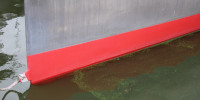
How Often Should You Antifoul a Boat?
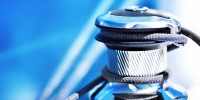
3 Ways to Convert Your Winches to Self-Tailing
Own your first boat within a year on any budget.
A sailboat doesn't have to be expensive if you know what you're doing. If you want to learn how to make your sailing dream reality within a year, leave your email and I'll send you free updates . I don't like spam - I will only send helpful content.
Ready to Own Your First Boat?
Just tell us the best email address to send your tips to:

Maximum Boat Horsepower Calculator
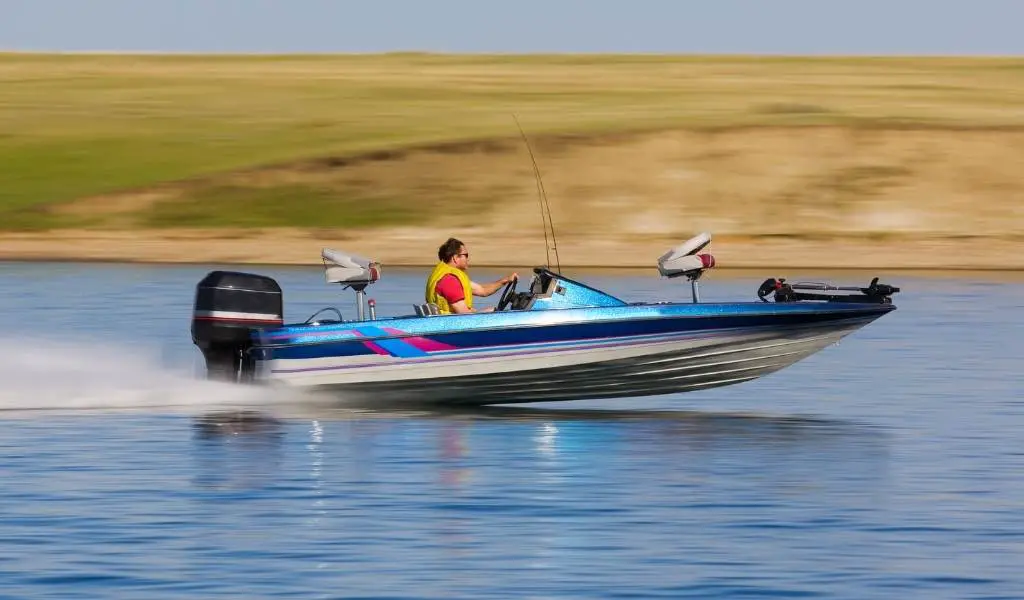
If you’re curious to know what the largest engine you can legally put on your boat is, try this calculator. It uses the federal regulations to compute the largest outboard engine you’re allowed to install.
The federal government regulates the horsepower of outboard motors that can be installed on boats. The maximum HP is determined by calculating the boat’s factor (the length multiplied by the width) and then looking up the allowable engine size in a table.
STEP ONE: Work Out Your Factor
Step two: convert factor to maximum horsepower, federal regulations about maximum horsepower, calculation method, manufacturer limits, the final word, horsepower calculator.
This step-by-step calculator will help you work out your maximum boat horsepower.
First, you need to workout your FACTOR, this is calculated using boat length and transom width. This calculator will help work out your FACTOR:
Using your FACTOR worked out above, you can find your maximum horsepower.
If the FACTOR is 52 or below, use this table:
If the FACTOR is 53 or more, use these calculations (round up to nearest 5):
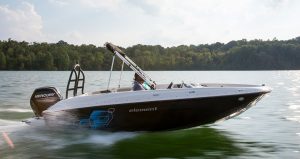
I’ve been playing around with the idea of putting a larger outboard on my boat , and decided to read the rules and regulations to see what’s allowed. The federal government has regulations for just about everything, so it should come as no surprise that they created one for the maximum horsepower capacity of your boat.
The Federal Regulations governing outboard motor horsepower capacity are listed in 33 CFR § 183.53 – Horsepower capacity . Feel free to read these regulations!
I did, and I discovered they are written in lawyerly language with a lot of exceptions and footnotes. Every time I found an outboard engine that interested me, I had to perform a tedious calculation and refer to the rules to see if it was legal or not. After a dozen or so times, I became very frustrated and decided to developed this tool. It makes the evaluation process extremely simple and eliminates some of the mistakes that I kept making.
Feel free to use this handy calculator to determine the largest outboard engine that is legal for your boat.
The federal government uses two methods for determining the largest engine allowable for your boat. One method is a calculation based on your boat’s dimensions and the other is a performance test. The calculator above uses the computational method. This approach calculates the “factor” for your boat that is spelled out in the rules. The factor is simply the length multiplied by the width of your boat. Based on this value, you lookup the maximum horsepower in a table. If you have a flat bottom boat, you’ll need to downsize the engine horsepower.
For large boats, there are a lot of special rules and things to consider. Each one of these factors results in an adjustment of the maximum allowed horsepower. Here are features your boat may have that will affect the allowable engine size:
- remote steering
- transom height
- boat bottom
Other Methods
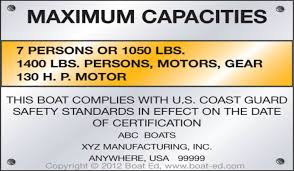
Most boats have a capacity plate that gives you a lot of information about your boat’s design capacity, including the maximum engine horsepower. If your boat was built after 1972 then it almost certainly has a National Marine Manufacturers Association Certification Plate. This plate lists the maximum motor horsepower that the boat designers built the boat to handle.
The capacity plate also lists the maximum number of passengers as well as the maximum weight your boat can safely carry. You can find this plate mounted near the helm.
If your boat doesn’t have a capacity plate or you can’t find it, you can likely find the information in the owner’s manual. Most manuals clearly state the maximum horsepower that the manufacturer deems safe and appropriate for your boat.
Don’t have the manual? Just call your boat’s manufacturer and ask. I’ve found the manufacturers to be very helpful. Every time I have a question about my boat, I’ve been able to get answer.
If you’re thinking about installing a bigger engine on your boat, you need to know what the federal regulations say. This calculator is a great screening tool to play around with, but it’s not meant to be a substitute for common sense or an expert’s opinion. You need to talk with a competent professional before making the decision about whether you can safely increase your boat’s power and how much. Talk to your mechanic and then contact your boat’s manufacturer to see what they say. The last thing you want to do is spend a lot of money only to create a safety hazard for you and your family.
Related Articles
What is the Best Outboard Motor for Saltwater How to Measure Your Outboard Motor Shaft Length Picking the Best Small Outboard Motor
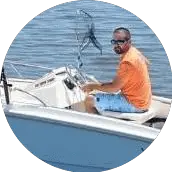
You Might Also Like
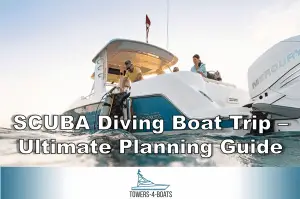
SCUBA Diving Boat Trip – Ultimate Planning Guide
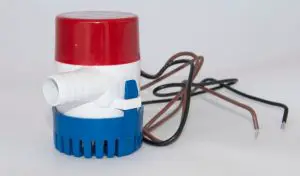
What Does a Bilge Pump Do?
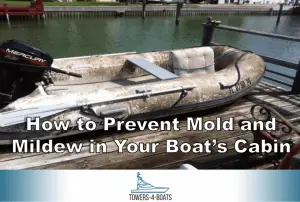
How to Prevent Mold and Mildew in Your Boat’s Cabin
- Build A Boat
- Find A Dealer

- How Much Horsepower Do I Need for My Boat?
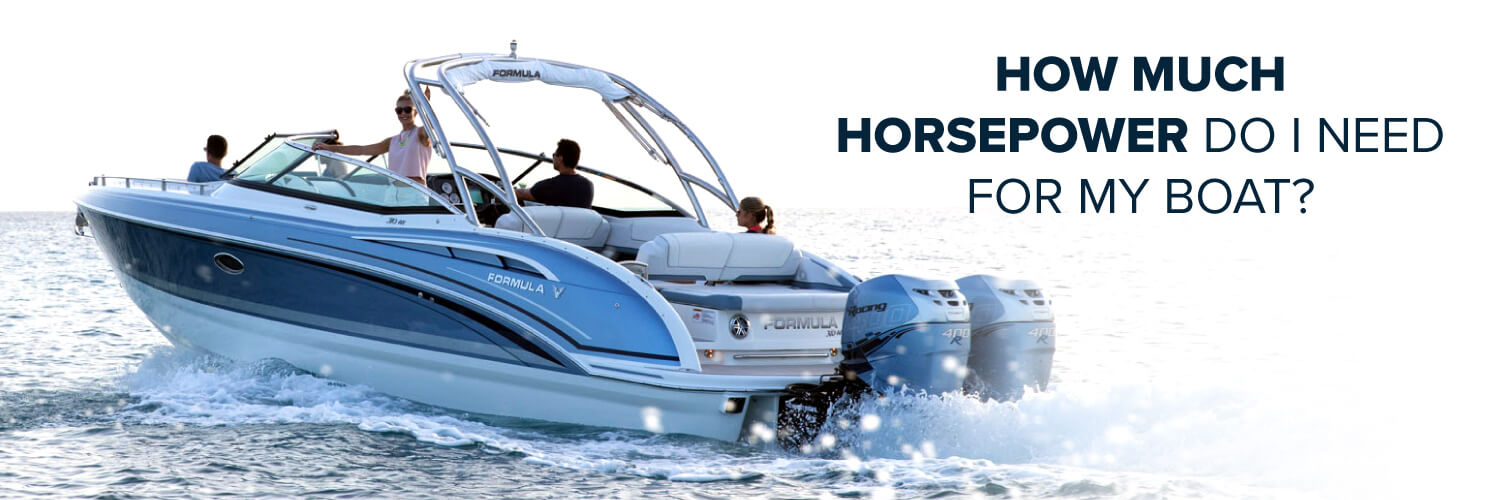
If you’ve been searching for a boat to purchase, or have reached the point at which you’d like to get a new engine, chances are you’ve asked the question, “How much horsepower do I need for my boat?” While the individual concerns may be different — wanting to make sure there’s enough horsepower or not too much horsepower — it’s a question many people who are interested in purchasing a new boat ask.
Sometimes, the follow-up question is, “Is it illegal to overpower a boat?” Whether you’ve been asking yourself one of these questions, or are just curious about how horsepower can affect the cost of fuel and insurance, we’ve gathered several pieces of information to educate you on horsepower. Through reading this information, you’ll be able to learn more about where it came from, how it’s calculated, how to determine the amount you need and the dangers that come with having too much.
What Is Boat Horsepower?
Horsepower is defined as a unit of power equal to 550 foot-pounds per second used to measure the power of an engine. Today, it applies to boat and auto engines, but its original use was to describe the power of a steam engine. In the late 1700s, a Scottish engineer named James Watt invented the first steam engine, which improved on a design pioneered by Thomas Newcomen in 1712 . It was a big deal. This new steam engine could do the same amount of work as the former Newcomen engine, but used only one-quarter of the fuel.
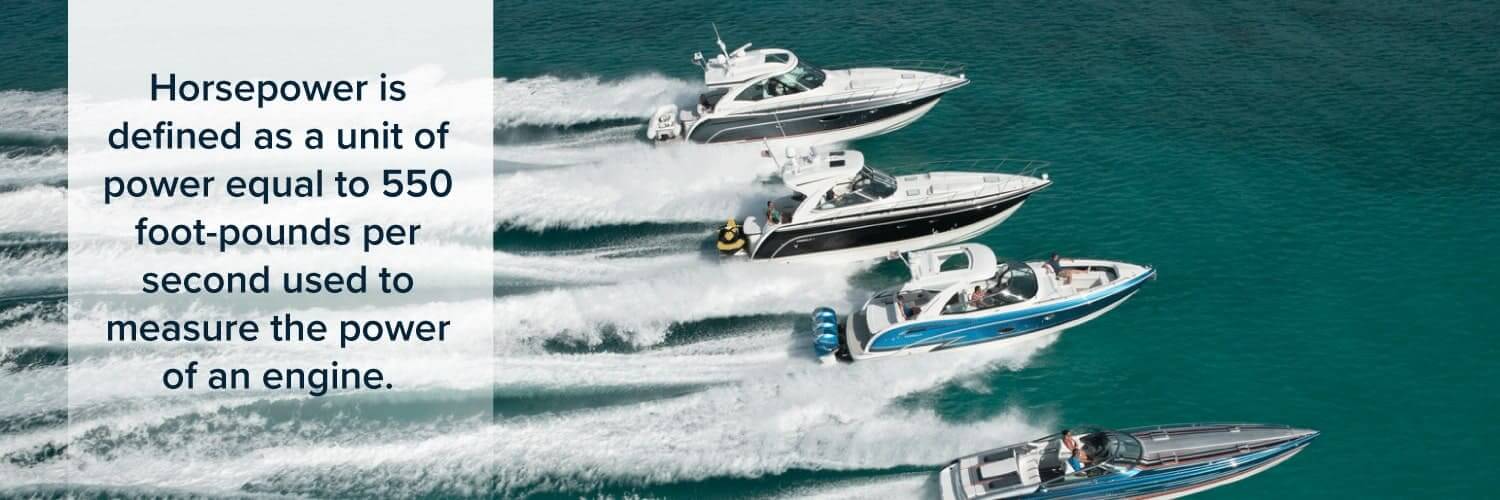
Unfortunately, comparing the steam engine to the Newcomen engine wasn’t effective marketing, as most of the population was still using horses for mechanical work. To market his new product to this audience, Watt knew he had to come up with a way to compare the work of horses to the work of his invention. Through his experiments, he determined one horse could do about 33,000 foot-pounds of work in one minute — meaning a horse could lift a 33,000-pound weight one foot in one minute. Therefore, he defined one horsepower as 33,000 foot-pounds of work per minute — or 550 foot-pounds per second.
There were a few flaws with this new measurement — the biggest being the assumption that a horse could continue to work at that consistent rate instead of tiring out. However, Watt didn’t let that fact bother him, and it didn’t bother his customers, either. Comparing the power of a horse to the power of a steam engine showed Watt’s steam engine could do the work of five horses, and it went on to become an integral part of the Industrial Revolution.
How Is Boat Horsepower Calculated?
The relevance of horsepower, the measurement of 550 foot-pounds per second, didn’t stop with the Industrial Revolution. The measurement of horsepower was converted into other units of measurement. For example, other experiments determined one horsepower equals 746 watts of energy. In other words, if you put a one-horsepower horse on a treadmill, it would be able to operate a generator producing 746 watts. Engineers also did calculations to relate horsepower to torque, which is especially important for boat engines.
Torque is easiest to explain through an example. Imagine you have a large socket wrench with a two-foot handle. You apply 50 pounds of force to that handle — when you do that, you’re applying a torque or turning force of a total of 100 pound-feet to the bold. Keep in mind, with that calculation, you could get the same result — 100 pound-feet of torque — by applying one pound of force to a socket wrench with a 100-foot handle, or by applying 100 pounds of force to a socket wrench with a one-foot handle.
In an engine, torque produces power — so being able to relate it to horsepower is critical. A device called a dynamometer applies a load on the engine and then measures the amount of power it produces to determine torque. Marine dynamometers are available, too — taking into consideration boat operation by simulating on-the-water operation. Once the torque has been determined, you’re able to convert torque to horsepower by multiplying torque by revolutions per minute (rpm) and dividing that product by 5,252. The divisor, 5,252, comes from a series of calculations that convert rpm to radians per second.
Through using a dynamometer, you’ll be able to see the horsepower versus rpm values for the engine, which is especially important for calculating peak horsepower. Engines will have a point in rpm at which the power available from the engine has reached its maximum. This is known as peak horsepower — it’s often documented as “___ HP at ____ rpm.”
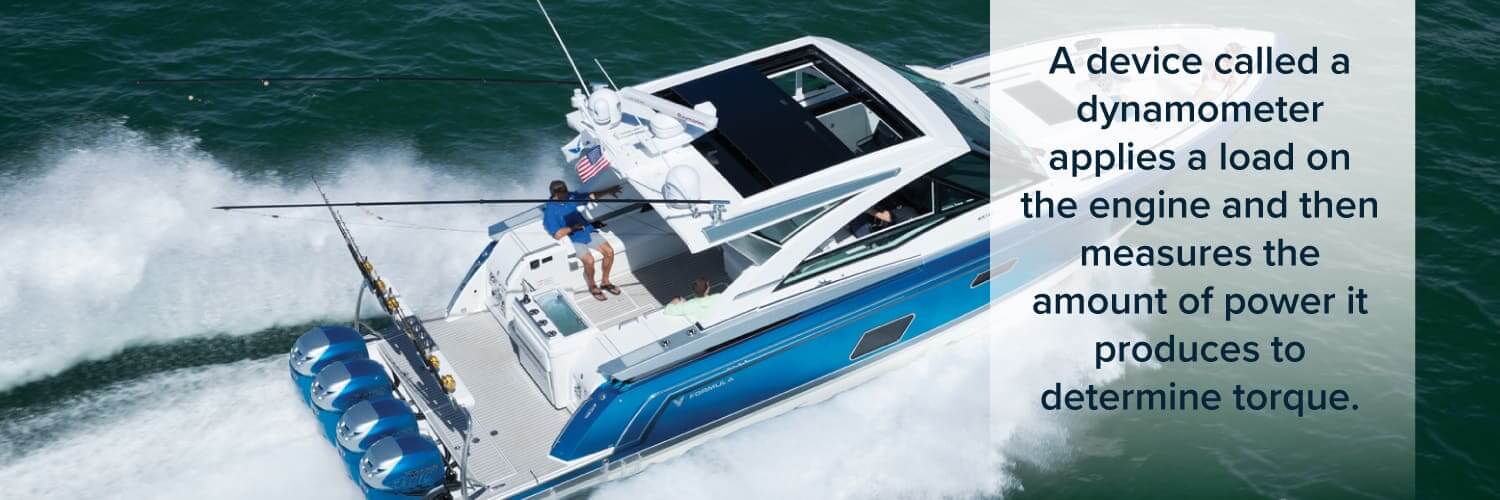
Determining How Much Horsepower You Need
Once you understand the history of horsepower and how that’s connected to the calculation we use today, it’s natural to wonder how much horsepower your boat needs. There are several factors to take into consideration when you’re determining how much horsepower you need — the manufacturer’s limits and recommendations, boat horsepower-to-weight ratio, fuel efficiency, use of the boat, number of people on the boat and an industry rule of thumb. Here are some things to consider in each of these areas to help you answer the question, “How much horsepower do I need for my boat?”
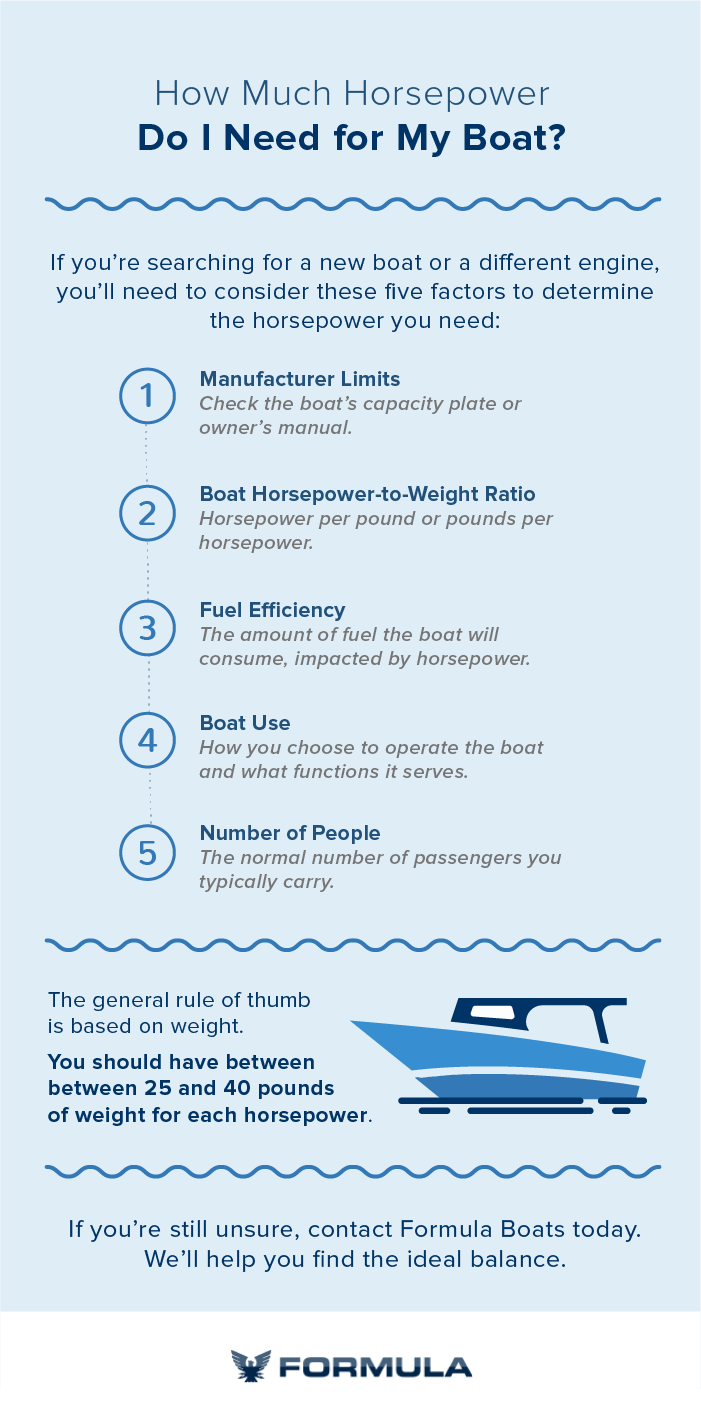
Manufacturer Limits
The easiest place to start is with the boat’s capacity plate — or owner’s manual. In addition to giving you a maximum for passengers and cargo, the manufacturer will also spell out the absolute maximum boat horsepower. If you have a boat that was built before 1972, came from overseas or was home-built, you may not have a capacity plate, but boat owner’s manuals are often available online. If not, you can always contact the boat’s manufacturer to inquire about their limits and recommendations for your particular boat model .
Boat Horsepower-to-Weight Ratio
When you’re trying to determine the amount of horsepower you need, it’s essential to consider the weight of the boat. The boat horsepower-to-weight ratio is simple to calculate and can be expressed in horsepower per pound or pounds per horsepower.
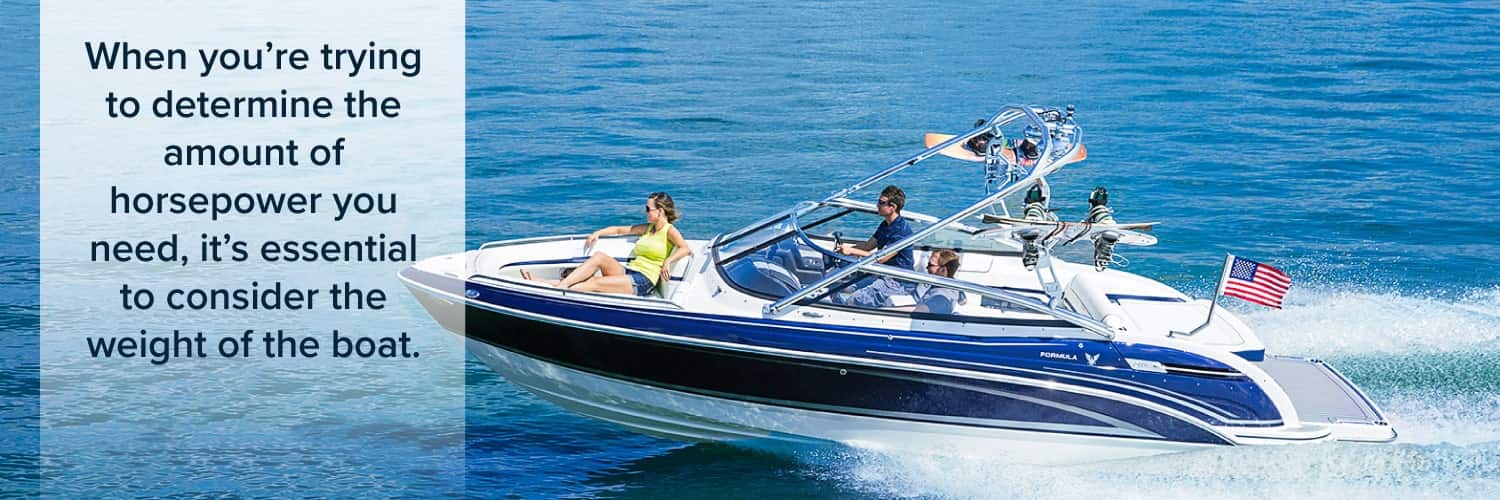
Let’s say, for example, your boat weighs 5,000 pounds, and it has a 300-horsepower engine. Taking 5,000 divided by 300 gives you a result of 16.6 pounds per horsepower. Doing the opposite calculation — taking 300 divided by 5,000 — gives you a result of 0.06 horsepower per pound. The lower the number, the faster your boat will go. Remember the boat horsepower-to-weight ratio once you’ve decided on horsepower and are matching outboard to boat size. While one or two outboards may give you the same horsepower result, keep in mind additional weight will accompany each additional outboard motor.
Fuel Efficiency
The amount of horsepower you choose will impact your fuel efficiency. However, just because you have a higher-horsepower engine does not necessarily mean you’re going to use more fuel. According to Boating magazine , running your gas engine between 3,000 and 3,500 rpm and your diesel engine at three-quarters throttle is the sweet spot for fuel efficiency. If you’re running a lower horsepower engine at full throttle all the time, it’s going to use more gas than a higher horsepower with less throttle. Keep this fact in mind as you consider what horsepower to choose.
For those who prefer exact calculations, Boating magazine has provided some calculations you can use to run some of the numbers. You’ll be calculating the gallons of fuel that are burned per hour (GPH). To do this, you need to know gasoline weighs approximately 6.1 pounds per gallon, while diesel weighs about 7.2 pounds per gallon. You also need to know a well maintained four-stroke gasoline engine is estimated to burn about 0.5 pounds of fuel per horsepower per hour, while a similar diesel engine is estimated to burn 0.4 pounds of fuel per hour.
The equation is GPH = (specific fuel consumption x HP)/fuel specific weight. For example, if you want to determine the fuel consumption for a 300-horsepower gasoline engine, you would calculate (0.50 x 300)/ 6.1, giving you a result of 24.5 gallons per hour.
As with most decisions related to boating, the use of the boat is always a factor. Are you using the boat just to cruise with friends and family ? Or will you be pulling water skiers, wakeboarders and tubers ? The addition of pulling someone behind the boat — and the additional weight of storing watersport accessories — increase the need for power and are often a reason to consider adding horsepower to your boat.
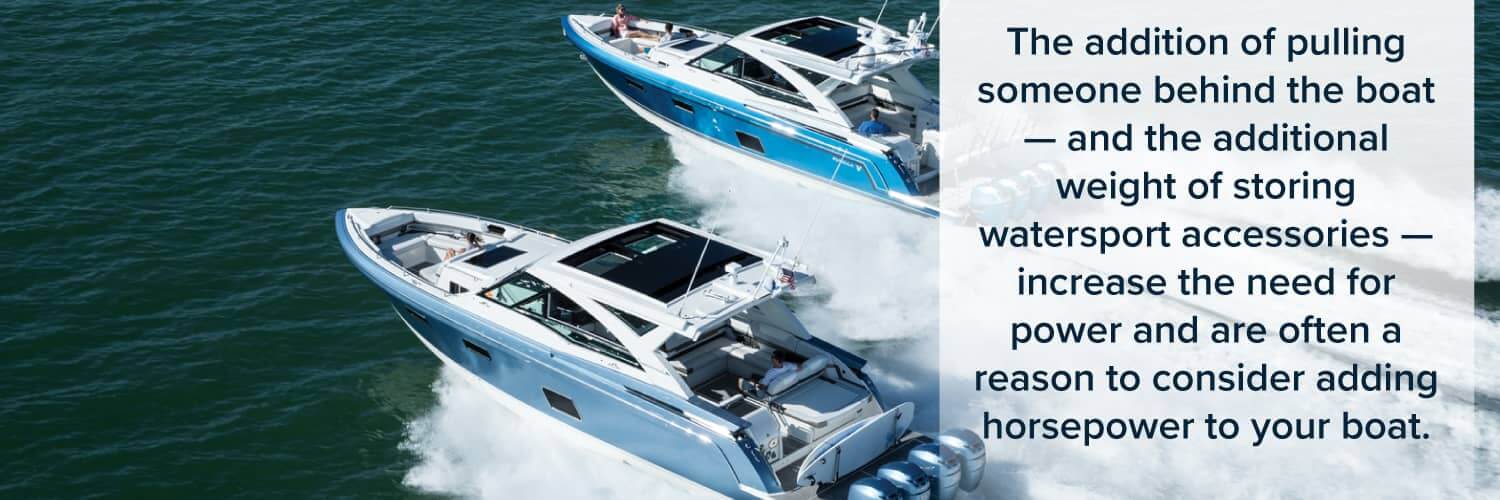
Number of People
Once you’ve considered the use of your boat, the next question to ask is what the normal number of passengers for your boat will be. If it’s usually just you and a friend or a spouse, that weight is different than if you enjoy boating with several of your family members and friends.
Rule of Thumb
If you’re the type of person who doesn’t need precise calculations — or just doesn’t want to be bothered with them — the Boat Trader blog offers a rule of thumb to use when determining the amount of horsepower for your boat. The rule of thumb is based on weight alone, and says you should have between 40 and 25 pounds of weight for each horsepower.
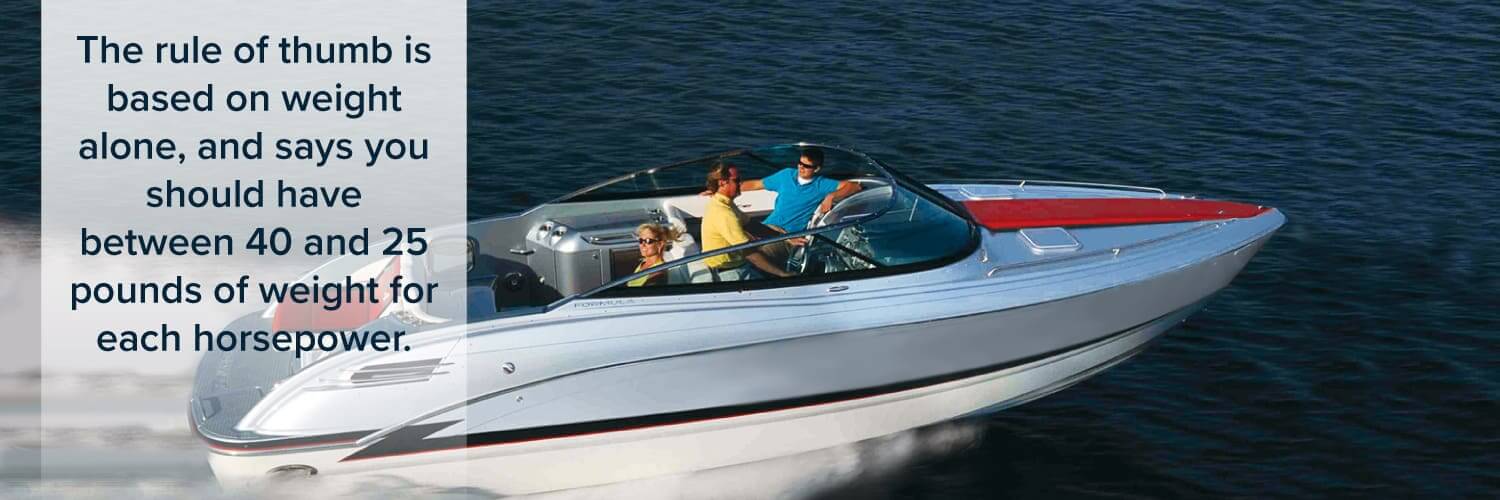
For example, a 5,000-pound boat could have an engine with between 125 and 200 horsepower. Yes, the range is wide, but that’s because boats have a variety of different designs and handle differently. While this rule of thumb can be a helpful way to get a ballpark range, it still requires some guesswork when it comes to considering your boat handling.
Federal Regulations
Is it illegal to overpower a boat? According to the federal government, yes. There are a few different ways you can define overpowering a boat. The horsepower capacity section of the Code of Federal Regulations contains its definition of overpowering a boat.
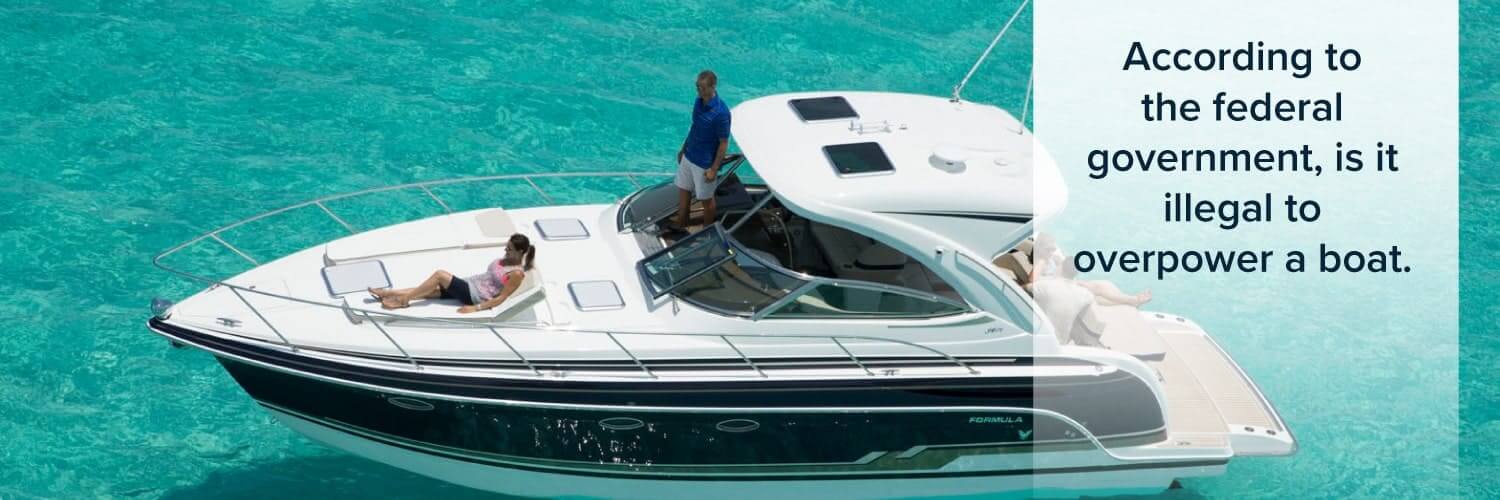
There are two different ways the federal government uses to determine the maximum horsepower for any given boat — one is a computation, and the other is a performance test. The way that is used depends on the boat. For the majority, the computation method is best to use. You multiply your boat length by the transom width. Then you take that number, which is known as the “factor,” and match it to a horsepower capacity according to the Code of Federal Regulations Table 183.53 — Outboard Boat Horsepower Capacity, shown below.
Don’t forget to adjust the result based on remote steering, transom height and boat bottom.
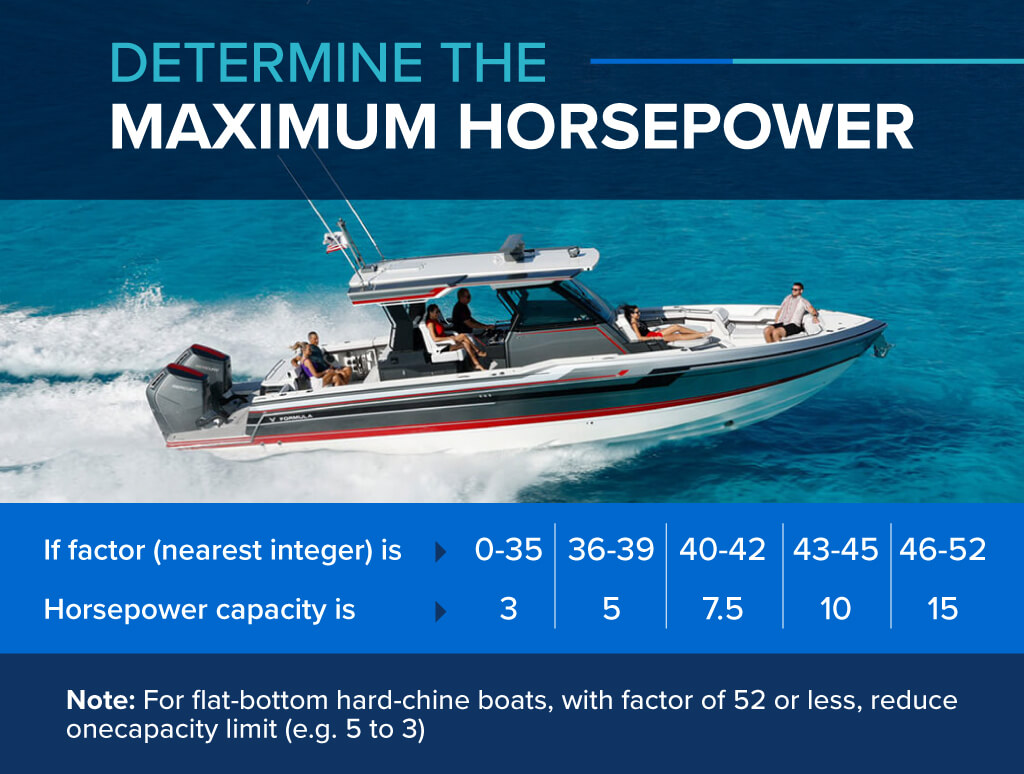
The performance test method is for boats that are 13 feet or less in length, have remote wheel steering, have a maximum capacity of no more than two persons and at least a 19-inch transom height — or at least a 19-inch motorwell height and at least a 15-inch transom height. Through this method, there are very specific instructions for boat preparation addressing everything from motor mounting to fuel tanks to ensure consistency. There are equally as specific instructions for the conditions in which you can perform this test.
The first part of the performance test is the quick-turn test. Setting the throttle at a low maneuvering speed and facing straight ahead, you then turn the wheel 180 degrees in half a second or less and hold it there. If you can complete the 90-degree turn without losing control of the boat or reducing the throttle, your boat has passed the test. Repeat, increasing the turn in speed until you can no longer pass the test, or you reach the maximum throttle. The maximum horsepower the boat can use while still completing this test is defined as the maximum horsepower capacity, unless it is more than 40 horsepower, in which case, the maximum horsepower capacity is capped at 40.
The good news is, these rules are in place for boat manufacturers, so assuming your boat’s manufacturer is following the federal regulations, you can consider the maximum horsepower capacity listed on your boat meets the federal regulation for its maximum horsepower.
Insurance Considerations
The amount of horsepower your boat has will influence your boat insurance, which is another fact to consider. There are three main areas of insurance the amount of horsepower you choose for your boat will affect — overall coverage, premium cost and type of policy.
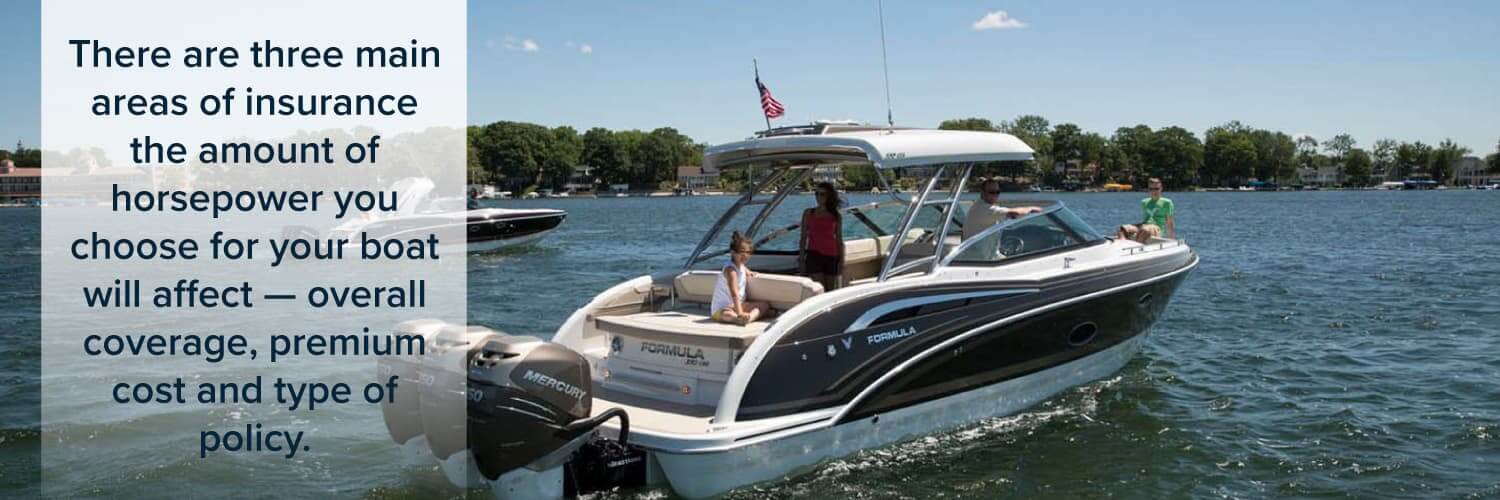
Overall Coverage
There is also a chance your insurance company will not cover a vessel that exceeds the boat manufacturer’s max horsepower. This is an extremely important factor, as it could affect your ability to get insurance coverage for your boat. If your boat is currently insured and you’re considering a motor upgrade, make sure you know your insurance company’s rules for horsepower limits. If you upgrade without abiding by these rules and notifying your insurance company, there’s a good chance they won’t cover any claim you file.
Premium Cost
While abiding by your insurance company’s rules for boat horsepower, it’s important to remember that doesn’t mean a change in horsepower won’t bring a change in your premium cost. As a rule of thumb, boats with higher horsepower will be more expensive to cover.
Type of Policy
In addition to solely considering the horsepower of the boat, the overall size of the vessel, which takes horsepower into account, may determine the type of boat insurance policy you need to get. For example, your homeowner’s or renter’s insurance policy will usually cover smaller powerboats with less than 25 horsepower. Boats that are larger and have more than 25 miles per hour horsepower almost always require a separate boat insurance policy.
Dangers of Overpowering Your Boat
Bigger and faster is not always better. Putting more horsepower behind your boat may seem like an innocent way to add some excitement to your boating experience, but it could cost you a significant amount of money in fines, lawsuits and damage to your boat. Here are a few examples of how your need for speed can get you in trouble when it comes to boat maximum horsepower.
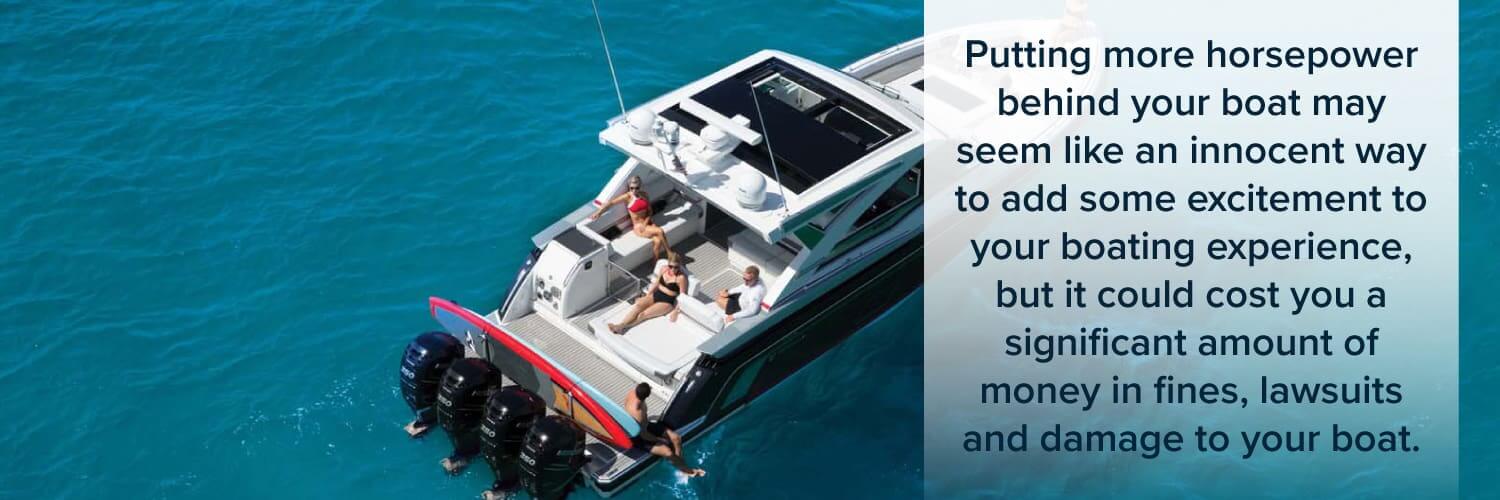
Breaking the Law
Is it illegal to overpower a boat? In some cases, yes. There are federal laws in place to ensure the appropriate horsepower limits are listed on all boats. State and local laws regarding overpowering your boat vary. Make sure you know the state and local laws for the areas in which you’ll be boating. Otherwise, your excess horsepower may be putting you at risk for fines and other consequences.
Accident Lawsuits
Even if your state and local laws don’t address overpowering your boat, you’re still putting yourself at risk in other ways. If you’re in an accident, the fact that your boat’s horsepower is above and beyond the manufacturer’s recommendations will be in the accident report. While you may not have fines because of breaking state and local laws, you are very susceptible to being found negligent and the victim of a lawsuit, especially in a case where there are damages.
Too Much Weight
In recent years, more horsepower hasn’t always meant more weight. However, it is still true in some cases, and that additional weight is another component of high horsepower that can be dangerous. For example, the additional weight can make a self-draining cockpit useless, leading to flooding problems.
Boat Damage
Even with additional horsepower that doesn’t add weight to the boat, the additional speed applies pressure that can cause significant damage to your boat. Every part of your boat, from the transom to the bow, was created to withstand a certain amount of pressure and stress. If you decide to ignore the boat’s maximum horsepower and overpower it, you’re exposing every part of your boat to pressure above and beyond what it was designed to endure, risking significant damage to the hull of your boat.
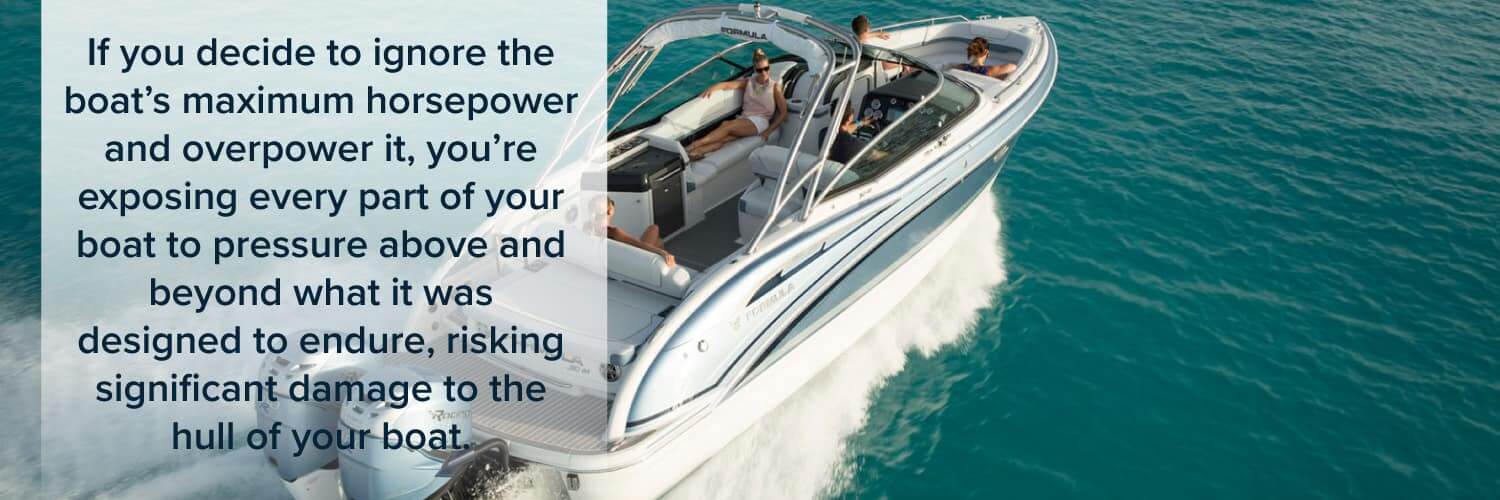
Finding a Boat With the Ideal Balance
As a boat manufacturer, at Formula Boats we know the balance of giving you the power and speed you want while making sure safety is a priority. If you’re considering purchasing a boat, our online boat builder gives you the opportunity to fully customize several different boat models with a few different horsepower options. You can be sure horsepower options for each boat model we provide are within the limits we believe maximize your performance while maintaining safety.
Discover a boat you like through our boat builder? We have dealers located throughout the country ready to help you find your boat. Get started by searching for the dealer location closest to you on our website.
Even though we narrow down the options, it can still be tough to choose the amount of horsepower that will give you performance based on boat weight and use, but also fuel efficiency. If you’re interested in one of our boat models, but are still wondering how much horsepower you need, we’re here to help — please don’t hesitate to contact us .

Contact Dealer
This site is protected by reCAPTCHA and the Google Privacy Policy and Terms of Service apply
What Size Outboard Motor for What Size Boat? (Boat Horsepower Chart)
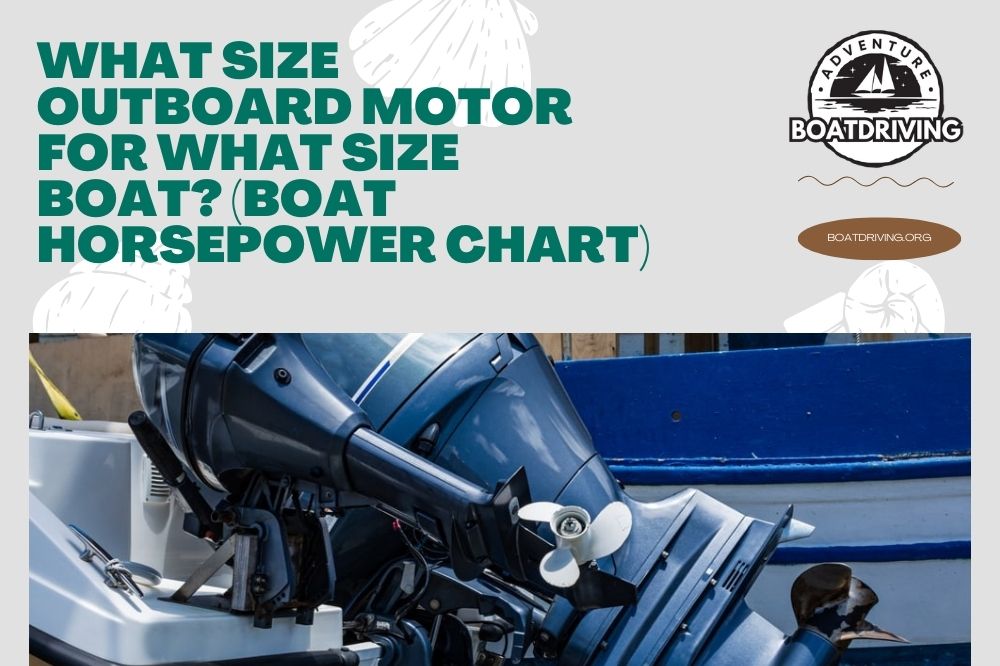
Once you buy a boat you want, it is time to determine what size outboard motor for what size boat. As you can guess, there is no magic formula for estimating it precisely, but you can get rough numbers when you check relevant information.
You should start with a boat type , a maximum passenger number, and the equipment weight you plan to carry. Then, you can determine the maximum horsepower recommended for your vessel. Finally, think about 2-strokes and 4-stroke motor options, right propeller size , and fuel type. Sounds complicated? Let’s make it easier!
Table of Contents
Motor Size Matters
Things to consider when selecting an outboard boat engine, ways of pair an outboard motor with your boat size.
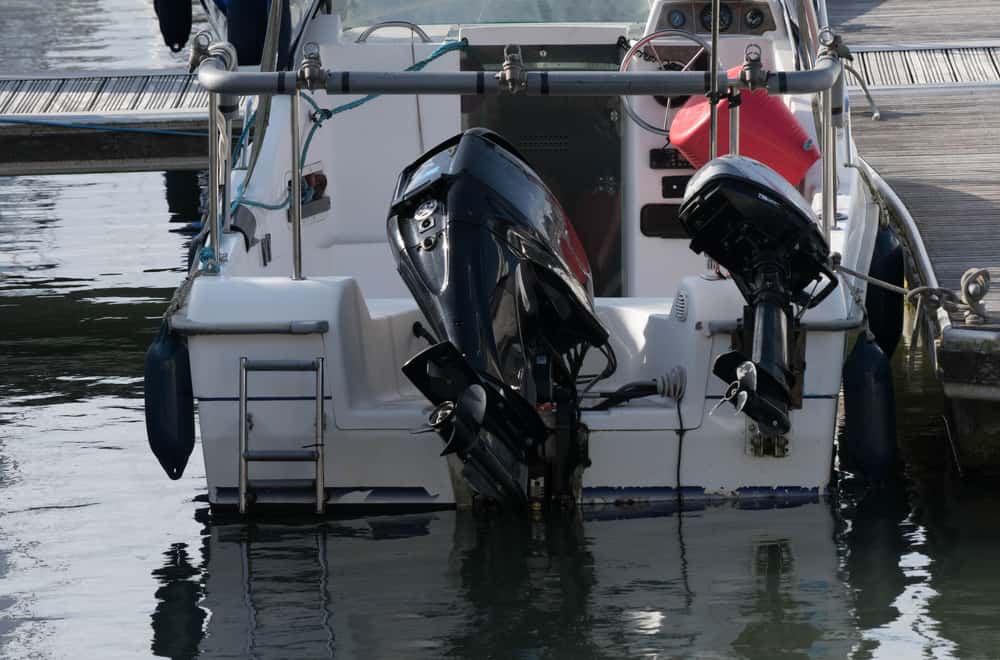
Yes, an engine size matters , and it is crucial to pair it with an adequate boat size to let it run smoothly.
Bigger motors with higher horsepower offer numerous benefits for comfortable boating, such as:
- You can sail at high speed
- A more sizable engine provides better handling, particularly when sailing at midrange speeds
- It makes water sports cozier
- You can count on better time maneuvering
- Such an engine will give you better control and provide more secure sailing in harsh weather condition
- Surprisingly, a motor with a bigger fuel tank uses less fuel
Downsides of a small engine
A too-small engine typically has difficulty powering a bigger boat so it will spend more fuel than a bigger model. Another problem is sailing with more passengers and equipment since extra load requires a motor with more horsepower.
Therefore, you should check the max HP a boat can handle before purchasing. That rating will show you a top weight it can carry, and you can risk uncomfortable and unsafe sailing, plus possible Coast Guard fines when exceeding it.
The vessel horsepower ranges from 2.5 to 1,000+ HP for contemporary outboard motors . You should pick out the most powerful one your boat can handle to provide smooth and comfy sailing.
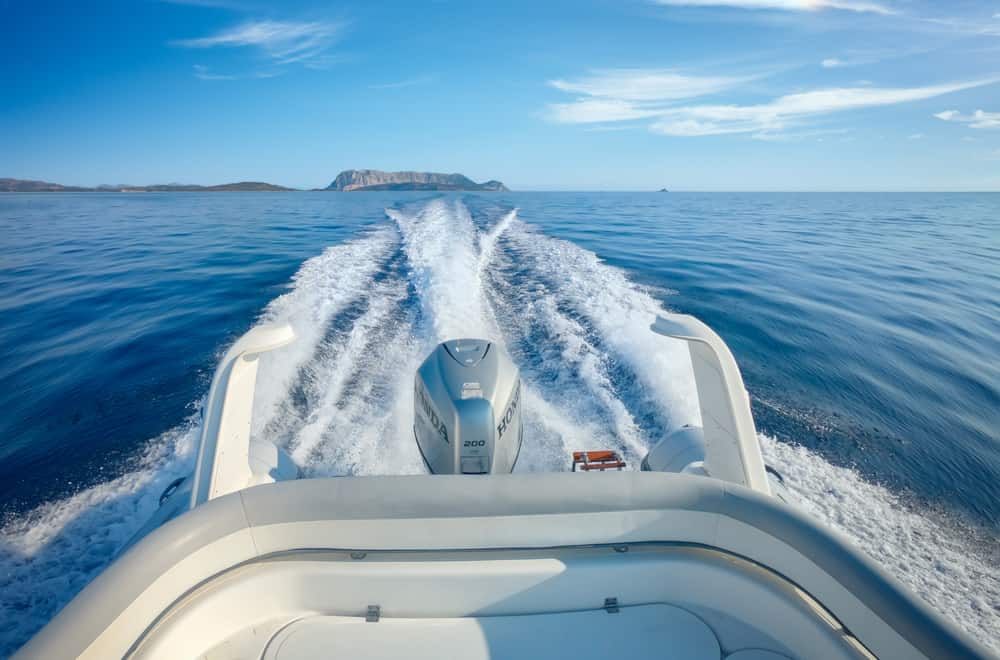
Horsepower is used to measure the engine power. On average, your vessel will need 5 HP per 2,200 pounds (1,000 kg) its weight. Small boats shouldn’t use more than 75% to 80% of the max HP because of the possibility of rough waters and headwinds while sailing.
Only that way, you can count on enough thrust to drive as desire. You should think about a few things when determining how much horsepower your boat needs, including:
Manufacturer limits
Manufacturers’ recommendation always shows a maximum passengers number and cargo weight your boat can carry. You can also find the absolute max boat HP in the manual.
If you have a boat built after 1972, you can find a capacity plate with this information inside the transom. Older vessels, home-built models, and those made overseas typically don’t have that plate.
However, you can contact the manufacturer or look for their manuals online to discover limitations and recommendations for your boat.
Horsepower-to-weight ratio
The only way to precisely determine your boat’s necessary horsepower is to consider its weight. You can calculate this ratio in horsepower per pound or vice versa.
HP/boat weight = required horsepower per 1 pound (0.45 kg)
boat weight/HP = number of pounds per horsepower
Let’s say you have a boat weighing 5,000 pounds (2,268 kg) with an engine of 300 HP. The calculation will look like:
- 5,000 pounds / 300 HP = 16.6 pounds (7.5 kg) per horsepower
- 300 HP / 5,000 pounds = 0.06 HP per 1 pound (0.45 kg)
You should do the math to match the desired outboard engine with your boat size correctly. The result will show how fast your boat will go since its speed will be higher when these numbers are lower.
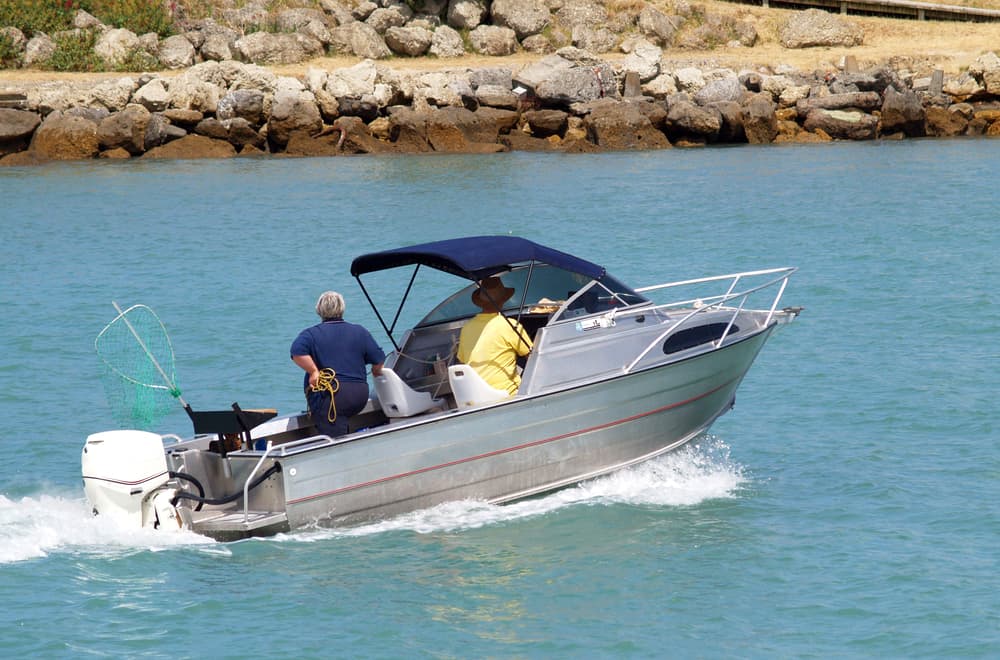
Horsepower your boat needs will also depend on its use. Any additional equipment weight or pulling water skiers behind the vessel increase the power it needs.
Number of passengers
In this case, the rule is simple. Your boat engine will work properly only when it carries 25 to 40 pounds (11.5 – 18 kg) per horsepower.
Once you have this information, you can check the boat weight and add the total weight of the passengers you plan to host on it. Then, you can effortlessly determine engine HP that matches your boat.
Fuel efficiency
As you can guess, the motor HP impacts the boat’s fuel efficiency, but that doesn’t mean a higher-horsepower engine necessarily consumes more fuel.
For instance, your motor with lower HP will use more gas at full throttle than the one with higher HP running with less throttle.
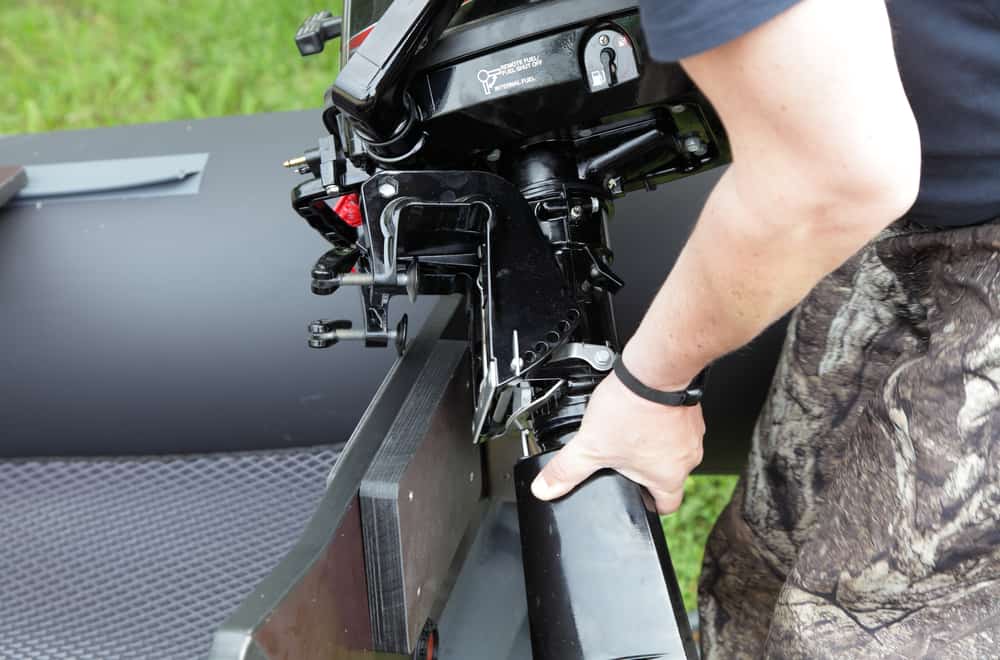
Engine type
Both 2-stroke and 4-stroke engines are good options. You should choose one or another, depending on the feature crucial for you.
The rule of thumb is that 2-stroke motors are lighter and less expensive, while 4-stroke models with the same power are quieter. However, these differences are diminishing nowadays.
Engine weight
One of the vital things is to match the outboard engine weight and boat size . That way, you will ensure sufficient power for the desired speed without jeopardizing safety and maneuverability.
Most 2 to 10 HP outboard engines weigh 35 to 90 pounds (16 – 41 kg). On the other hand, you should count on 100 to 160 pounds (45.5 – 72.5 kg) for a 20 to 30 HP motor. In this case, you can have a problem carrying a too heavy engine around.
Required speed
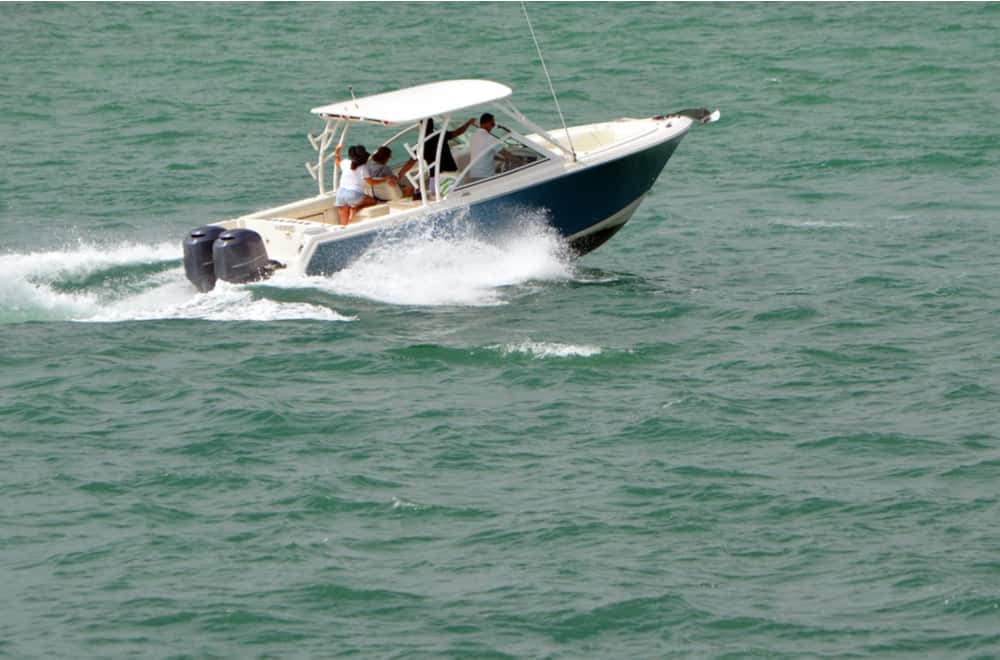
The rule of thumb is that your boat needs more power to reach a higher speed. The equation says that 1 HP can move 40 pounds (18 kg) of boat weight at 20 mph (32.2 km/h). According to that, you can calculate that your boat weighing 2,000 pounds (907 kg) needs 50 HP to reach the speed of 20 mph (32.2 km/h).
Federal regulations
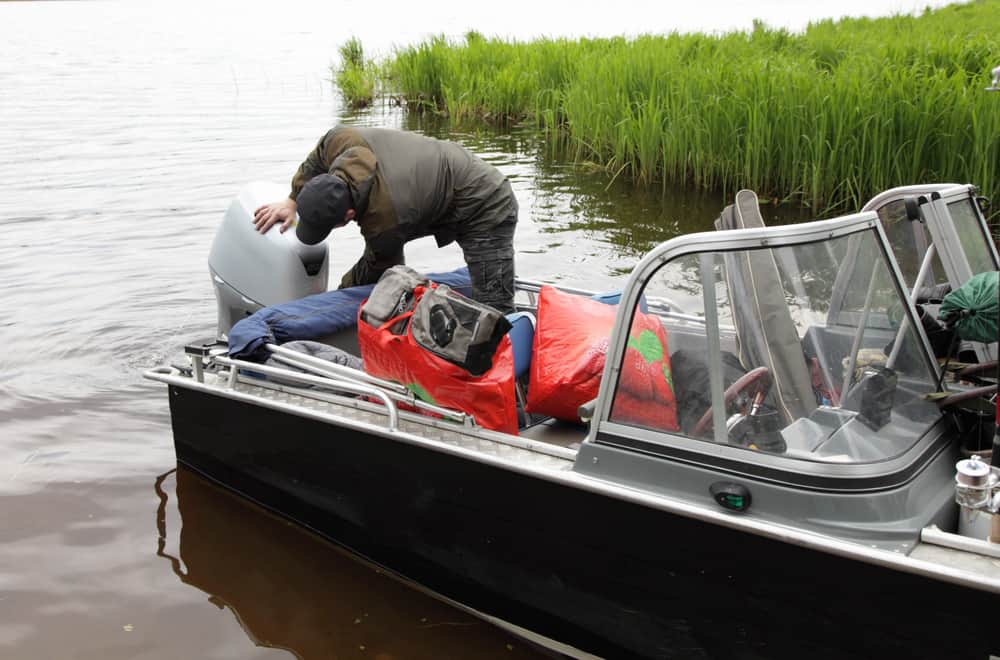
In the US, it is illegal to overpower your boat. The Code of Federal Regulations clearly defines vessel overpowering, so you should check it before getting into a situation to break federal law.

You should know that your boat’s horsepower directly affects its insurance , and models with higher HP typically has higher premium costs. Keep in mind that the insurance company won’t cover a boat with an upgraded engine that exceeds the max HP recommended by the manufacturer.
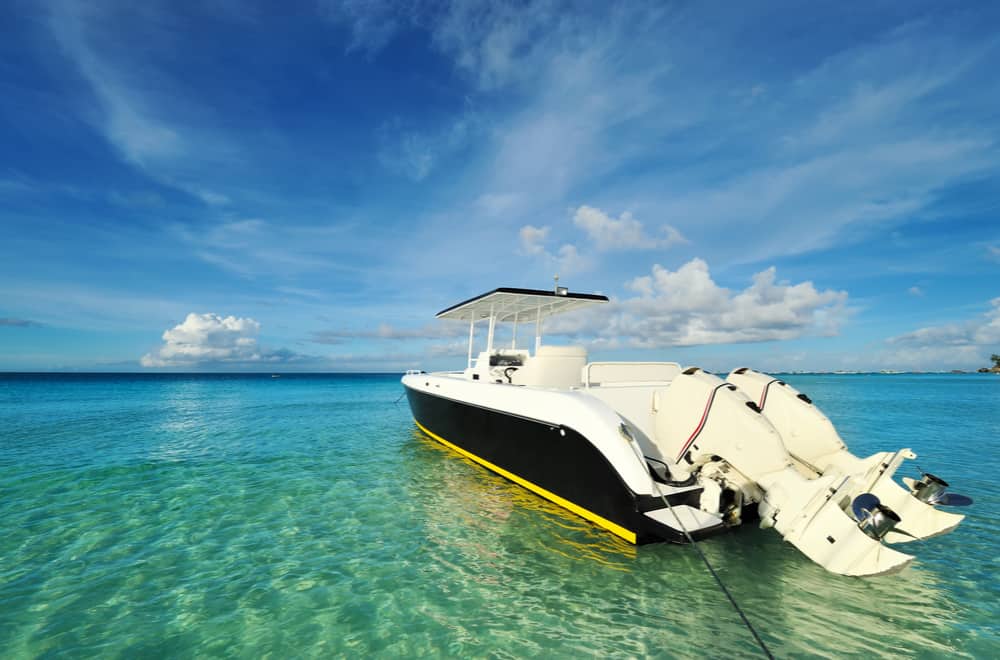
The best way to properly pair an engine with a boat of a particular size is to determine its horsepower.
2 to 3.6 HP engine
These small, less than 40 pounds (18 kg) weight, 2-stroke outboard engines are an excellent option for portable boats, like:
- Inflatable boats
- Small pontoons
- Small sailboats
They can push small boats at 5 to 9.5 mph (8 – 15 km/h), depending on weather conditions, current, as well as boat weight and design.
5 to 6 HP engine
This horsepower range is ideal for boats weighing 8 to 11.5 pounds (18 – 25 kg), including:
- 12 feet (3.65 m) long inflatable boats
- Portable folding boats
- Large canoes
- 8 to 12 feet (2.5 – 3.65 m) long inflatable and dinghy boats
Such an engine can propel your vessel with one person at 10 to 17.5 mph (16 – 28 km/h).
8 to 9.8 HP engine
You should pick out this small but powerful 11.5 to 20.5 pounds (25 – 45 kg) heavy outboard engine for your:
- 10 to 14 feet (3 – 4.5 m) long inflatable and aluminum boats
- Large portable folding boat and sturdy canoe
- Up to 14 feet (4.5 m) long light fiberglass boats
An outboard motor in this range is an excellent option for propelling a boat carrying a light load and two people at 9.5 to 17.5 mph (15 – 28 km/h).
15 to 25 HP engine
Although powerful, these 16.5 to 23.5 pounds (36 – 52 kg) heavy 4-stroke outboard engines are still in a small outboard HP class. They are an excellent choice for:
- 10 to 14 feet (3 – 4.5 m) long inflatable boat
- 12 to 16 feet (3.65 – 5 m) long Jon boat , fiberglass boat , and aluminum fishing boat
These smooth-running engines can propel most boats to 25 mph (40 km/h) when carrying several people and heavy loads.
Whatever boat type you have, you should buy the smallest possible outboard engine that can allow a max hull speed with 90% of the revolutions per minute. Unless you want a higher-speed boat , you can use your 20 HP engine for twenty years and get an excellent fuel economy.
Related posts:
- 6 Tips to Buy a Small Boat Motors
- What Should You Do Immediately If a Boat Motor Catches Fire? (Causes & Prevention Tips)
- How Much Does A Boat Motor Cost? (3 Types)
- 10 Best Small Outboard Motors
3 thoughts on “What Size Outboard Motor for What Size Boat? (Boat Horsepower Chart)”
Look I’m getting confused. I’m looking at 20 to 21 foot fiberglass star craft. My weight is around 260 my girl is around180. The dealers are trying to sell me a 150 yamaha. A northern dealer is trying to sell me a 20 ft boat with a 70 hp yamaha. The price is nice for the 70 hp but I’m not shore that it’s good for that boat. Help.
The lower the “hp/lb” value, the faster the boat. For example, you have a 3,000-pound boat with a 200-horsepower outboard motor. A pound will correspond to 0.067 HP.
The weight boat is one of the variables to consider when finding the maximum horsepower. Calculating the ratio between horsepower and weight is straightforward. You only need your boat’s weight and its boat HP rating.
Leave a Comment Cancel reply
Save my name, email, and website in this browser for the next time I comment.
404 Not found
Sailing n Cruising HOME
Prop calculator, calculated values from inputs used to derive size and pitch, power required numbers, prop pitch numbers.
404 Not found
JavaScript seems to be disabled in your browser. For the best experience on our site, be sure to turn on Javascript in your browser.
- Compare Products
ALL THE SUPPLIES YOU NEED TO GET YOUR BOAT BACK IN THE WATER ARE 10% OFF NOW! DISCOUNT APPLIED AT CHECKOUT

781-246-7401
Product Search
Proceed to checkout.

Sizing Up Your Boat's Engine: How to Choose the Right Horsepower
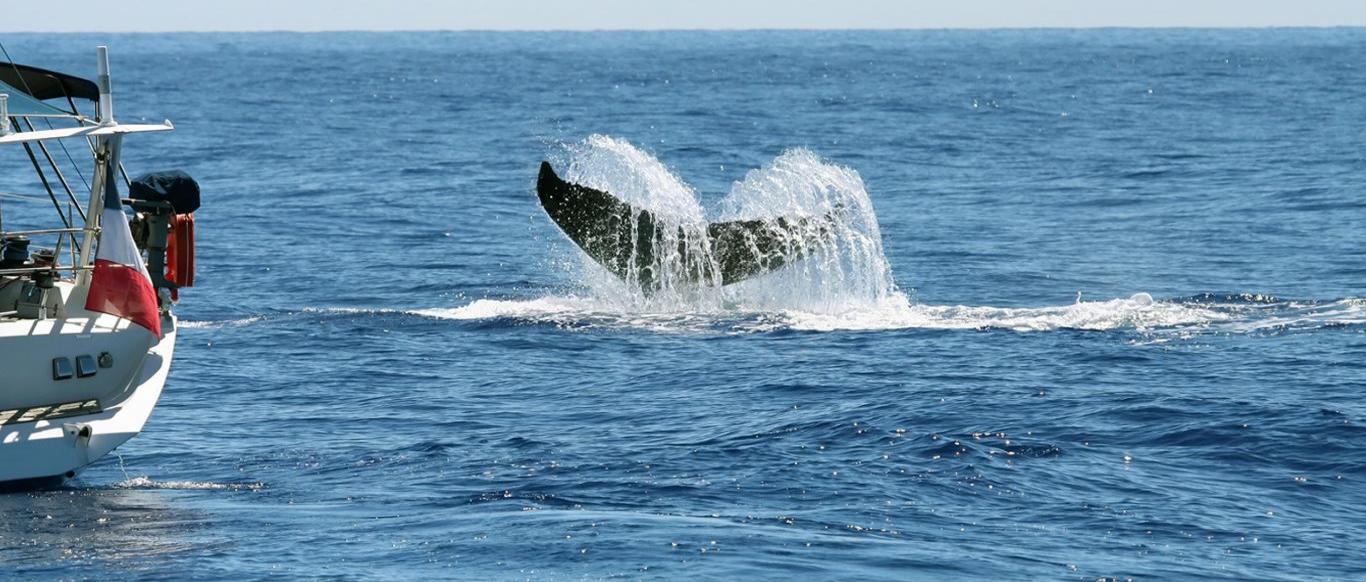
- Back to Blog

When buying a boat, one of the most important considerations is the engine and how much horsepower you need. The horsepower rating determines the boat's overall performance - how fast it can go, how well it can tow skiers or tubes, and how easily it can handle choppy water or strong currents. Choosing the right engine size and horsepower for your boat involves weighing several factors. Here is a guide to determining how much horsepower you need for your boat:
Consider the Boat's Size and Weight
The size and weight of the boat itself is the starting point for choosing an appropriate engine. Heavier boats require more horsepower to reach planning speed - the speed at which the boat rises up and planes on top of the water rather than plowing through it. As a general guideline:
- Small boats under 16 feet generally need 30-50 hp
- Medium boats 16-20 feet need 50-150 hp
- Large boats 20-30 feet require 150-300 hp
- Extra large boats over 30 feet can go up to 1000+ hp
The boat's hull design and weight distribution also impact power needs. A deep V-hull splits and displaces water more efficiently than a flat bottom, requiring less horsepower. The heavier the boat, the more power it takes to accelerate and maintain speed. Consider the fully loaded weight, not just empty weight.
Determine Your Performance Goals
Once you know your boat's size and specifications, think about how you plan to use it. Your performance expectations should dictate the engine size. Important factors include:
- Top speed desired - more horsepower enables higher maximum speeds
- Acceleration - more power means faster planing and acceleration
- Towing - skiing, wakeboarding, tubing require more hp to get up to speed while towing extra weight
- Water conditions - choppy water, strong currents and frequent shallow areas demand more reserve power
- Number of passengers - boats overloaded with people need larger engines
If you want high performance for water sports or ocean use, choose an engine at the higher end of your boat's recommended capacity. For casual cruising on calm inland waters, less horsepower could suffice.
Match the Horsepower Rating to Boat Capacity
Every boat has a recommended horsepower capacity range printed on the capacity plate (required for all recreational vessels produced after 1972). This specifies the minimum and maximum engine horsepower designed to work with the boat's design capabilities and meet safety standards. It is not recommended to go outside these limits.
The given capacity factors in:
- Max weight load - including passengers and gear
- Top speed potential
- Maneuverability
- Structural integrity - transom design and materials
Exceeding the maximum horsepower rating stresses the transom and boat structure while providing minimal extra speed. Going under the minimum capacity hinders control, performance and safety.
For best performance, choose an engine in the mid-upper range of the recommended capacity. This allows room to grow in case you add more accessories that add weight over time.
Factor in Maintenance and Fuel Efficiency
The engine choice also impacts operating costs in terms of maintenance needs and fuel efficiency. More horsepower means higher fuel consumption. Fuel costs make up the bulk of most boating budgets, so fuel economy should be a consideration.
At the same time, smaller underpowered engines strain harder to get up to speed and tow loads. This can lead to more frequent repairs down the road.
Balance performance desires with practical maintenance and budget considerations. For most boaters, erring on the side of slightly more horsepower prevents premature wear and provides a more enjoyable experience overall.
Think About Engine Type
The engine type - outboard, inboard, jet drive, etc. - also influences horsepower needs. Here are some of the most common engine configurations and factors:
Outboard engines:
- Attached externally to the transom
- Require minimal interior space
- Offer versatile power options
- Require less maintenance
Inboard engines:
- Mounted internally, providing more room
- Heavier than comparable outboards
- Streamlined design for speed performance
- More complex servicing required
Inboard/Outboard:
- Interior engine, exterior drive
- Efficient use of power
- Built-in backup if one system fails
Jet drives:
- Draw water internally via pump and expel for propulsion
- Allows use in very shallow water
- Requires large impellors for higher speeds
- Weedless design eliminates fouling issues
- Run on airplane propellers instead of marine
- Very shallow draft
- Noisier but higher top speeds
- Require large horsepower - 200hp+
Consider engine type advantages that align with your usage needs when choosing horsepower. Jet drives designed for shallow water operation require much higher horsepower, for instance.
Research the Engine Brand and Model
Not all marine engines are created equal. Research your options to select the optimal combination of performance, reliability and value. Consider:
- Fuel efficiency - 4-stroke and direct fuel injection tend to rate higher mpg
- Noise and vibration - some brands are quieter with less troubling vibration
- Features - look for smart technology like GPS integration, auto-leveling
- Durability and maintenance needs - check warranty coverage
- Customer reviews - learn from other users' real-world experience
Leading marine engine manufacturers include Mercury Marine, Yamaha, Suzuki, Honda, Volvo Penta, and Evinrude. Check forums and expert reviews to compare brand ratings. Your specific boat design may work best with certain engine models.
Consider Going for More Power
When in doubt choosing the ideal horsepower, consider sizing up. The incremental cost difference between engine sizes is usually minor compared to the entire boat package. More horsepower gives you greater versatility and resale value. You can always operate a larger engine at lower RPMs, but you can't safely push a small engine beyond its limits.
Many experienced boaters recommend choosing 10-20% more horsepower than the minimum requirement. This provides a cushion for added accessories and maintains optimal performance as the engine gradually loses hp over time. It also leaves capacity for higher loads and speeds when needed.
On the other hand, significantly overpowered boats can be more difficult for novice boaters to control. Use your best judgment based on your skill level and needs.
Test Drive Before You Buy
If possible, test drive boats with various engine sizes to feel the performance difference firsthand. Notice how well it accelerates onto plane, cruises at varying speeds, and handles turns at high speeds. Observe noise, vibration, exhaust issues, ventilation and cooling. Testing your actual boat is ideal, but you can get useful insights from demoing nearly identical models.
Ask the dealer detailed questions about the real-world pros and cons of different horsepower options. They want to match you with the appropriate power range to satisfy your needs so you have a positive boating experience.
Installing the Right Propeller
The propeller is just as critical to performance as engine horsepower. The ideal prop maximizes thrust and efficiency for your boat and chosen engine. It should allow the engine to reach its full RPM range at full throttle.
Factors in prop selection include:
- Pitch - Steeper vs shallow pitch for speed vs acceleration
- Diameter - Bigger for more slippage and RPMs at higher speeds
- Materials - Aluminum, stainless, nickel alloys each have pros/cons
- Number of blades - 3-blade most common, 4+ blades for lift at high speeds
- Prop style - Gears, jets, hi-performance, solas, etc.
A prop that is too small forces the engine and overheats it. Going too big leads to ventilation and blow-out. Consult an expert on optimal propeller sizing once you choose the engine.
Maintaining Your Optimal Horsepower
To ensure your motor continues delivering its rated horsepower over time:
- Follow the maintenance schedule - oil changes, spark plugs, lubrication, etc.
- Use high-quality marine engine oil and gasoline with fuel stabilizers
- Replace corroded wires, filters, pumps and battery
- Keep bottom clean and free of growth and debris
- Have engine serviced annually by certified marine technicians
- Watch gauge readings for overheating, low oil pressure, charging issues
- Address any leakage or strange noises promptly
- Don't tamper with engine settings or over-rev
With the right amount of horsepower matched to your boat size and usage, you'll enjoy optimal power, handling, safety and fuel efficiency on the water for years of boating pleasure.
- Recreational Boater's Buying Guide
- Understanding Navigation Buoys and Channel Markers
- Decoding the Secrets of the Seven Seas: Understanding Nautical Flags & Their Meanings
- A Comprehensive Guide to Liveaboard Life
- 50 Sidesplittingly Funny Boat Names for a Good Laugh

Boat Horsepower Calculator
- Use this Boat Horsepower Calculator to estimate the power required to efficiently move your skiff. See the article “ Do You Really Need That Much Power? “
- Use English Units (pounds, cubic feet), no commas, please!

HORSEPOWER FOR OUTBOARD BOATS
HORSEPOWER CALCULATIONS FOR OUTBOARD MOTORBOATS WITH ENGINES GREATER THAN 2HP
Reasons for Safe Horsepower ratings
Start-in-gear protection requirements for outboards.
The Rules are in 33 CFR Subpart D 183.51 - 183.53
Outboard horsepower ratings are based on a variety of factors.
These include; Centerline length. Maximum Transom width. Transom Height. Type of steering: remote or tiller. Hard Chine Flat Bottom or Other.
There is a formula for computing Safe Horsepower based on various combinations of the above factors. See the table below. This only applies to a monohull boat less than 20 feet in length (6.096 meters)
Canada uses similar formulas for computing outboard power in kilowatts. (1 HP = 0.745 KW)
The below formulas do not apply to: sailboats , canoes, kayaks , and inflatable boats , that are designed or intended to use one or more outboard motors for propulsion. It does not apply to boats that are true multihulls. A multihull makes two or more separate footprints in the water. A pontoon boat is a multihull.
Taken from Title 33 Code of Federal Regulations Subpart 183.53
Example 1: Bow Rider - Length = 19' 6" Transom width = 84" remote steering and 20" transom height.
(Length x Transom Width X 2)-90 = HP = ( 19.5 X 7.0 X 2) - 90 = 273 - 90 = 183 (136 KW)
Horsepower = 185 (138 KW)
Example 2: Length 12' Transom width = 46" Tiller steering and 15" transom height.
( Length x transom Width) = 45.96 Horsepower from table = 10 (7.5 KW)
Horsepower is rounded to the next multiple of five.
Content Continues After Ad
Beware of steering changes : If your boat is rated for remote steering, and the buyer wants you to reconfigure the boat from remote steering to tiller steering, the boat can no longer be rated for the higher horsepower allowed with remote steering. You will have to change the labels to the lower horsepower rating.
Conversely: if the boat is rated for tiller steering and the buyer wants it to have remote, you will have to put on a label reflecting the higher horsepower rating.
Special Rules : For boats that meet the following qualification there is an optional test course method for determining horsepower:
13 feet or less in length. Outboard Powered. 2 or less passengers. Remote steering and 20 inch transom height.
See Horsepower page 2 :
How did we get these rules for power on outboard boats? Is there a better way
Most of the horsepower (or kilowatts in some countries) ratings for monohull outboard boats, used today, were developed back in the 1950's by the BIA and the Yacht Safety Bureau. They ran tests on various boats and came up with the formulas for different types of boats. Primarily the limits on power are due to two factors, one is simply handling of the boat. Putting too much power on the back of a boat can make it handle erratically, spin out, and difficult to steer. The other is weight. Putting a much larger engine on the transom can make the boat sit stern down and make it easy for a following wave to roll over the transom and swamp the boat.
Also different types of hull shapes handle power in different ways. Flat bottom boats with hard chines are much easier to skid sideways in a turn, or to catch a chine and trip the boat, possibly flipping it, than a boat with a vee or rounded bottom. Boats with a shorter transom height sit lower and are easier to swamp than a boat with a full height transom (20 inch). Engines come in standard shaft lengths, generally 15 inch, 20 inch and 25 inch, i.e. short shaft, standard, and long shaft.
But, over the years both boats and engines have changed considerably, so shouldn't the rules have changed? Well, probably, but with everyone required to use the same formulas, at least they present a level playing field. Everyone has to use the same rules. Tests conducted in 2003 indicated that many boats may actually be overpowered using these formulas. More testing needs to be done.
Is there a better way? There may be. Way back when, ABYC developed a test course standard for boats that don't have to meet the US Federal regulations. This course is basically the same one that was originally used to obtain the formulas and measures a boats ability to maneuver through a course with turns, without becoming unstable. The Coast Guard used this test course when it developed a separate standard for boats 13 feet or less, with one or two passengers, a 20 inch transom height and less than 40 horsepower. These were popular in the 80's, and called thrill craft, before the advent of Personal Watercraft.
In the 1980's the Coast Guard and Mercury Marine did a lot of testing on different types and sizes of boats instrumented with accelerometers. These instruments measured the acceleration sideways in a turn. The basic theory was, the more power, the greater the sideways, or lateral accelerations. Unfortunately the data revealed that there was no correlation, between power and lateral accelerations in a turn. There was more of a correlation between acceleration and the boat hull type.
The International Standards Organization (ISO) has developed it's own test standard, a collision avoidance test, or barrier test. An imaginary barrier is set up on the water and the boat with rated power, run at full throttle, has to avoid "hitting" (actually crossing over) the barrier by turning at a specific distance which is calculated based on the length of the boat. The test is repeated with larger engines until it can't avoid the barrier. The highest power with which it could complete the turn is the rated power.
On the more technical and scientific side, some naval architects and engineers have done research into resistance on planing hulls and developed formulas based on weight, wetted surface at speed, resistance, angle of the vee and other factors. These formulas are used frequently to determine power for larger inboard powered planing hull boats but aren't really applicable to small (under 20 feet) outboard powered boats.
So where does that leave us? The Coast Guard has been doing some testing comparing the ISO standard to the US standard to see how a boat rates under each standard. Whether this will develop into a new standard is open to speculation.
Start-In-Gear Protection: Another important safety consideration is to prevent engines from being started while the boats drive is in gear. This matters because people get tossed out of the boat when the boat suddenly starts and jumps forward. Statistics showed a significant amount of accidents in which someone had gone aft to work on an outboard engine, the engine started up in gear and the person was thrown over the transom of the boat. So the USCG adopted a regulation requiring outboard motors with greater than 115 lb. of thrust (about 2 HP or about 1.5 KW) to have a device that prevents the engine from being started when in gear. However, ABYC has a standard, P-14 Mechanical Propulsion Control Systems, which requires start-in gear protection on inboard and inboard/sterndrive boats as well. So most power boats have start-in-gear protection. Not to be confused with Kill Switches.
Kill-Switches : Emergency engine stop switches that stop the engine if the device is tripped by the operator being knocked down or thrown out of the boat. Usually this is a simple lanyard attached to the key, or a switch. When the lanyard pulls the key out or trips the switch the engine stops. There are more sophisticated devices on the market. This is now a USCG requirement. ABYC does have a standard for it, A-33 Emergency Engine/Propulsion Cutoff Devices, and most boats produced today have them, especially Personal Watercraft. The industry standard for PWCs requires them to have a Kill Switch.
Back To Top
© newboatbuilders.com 2007 All rights reserved Revised 05/15/2023
Created with Dreamweaver 21.2 ©newboatbuilders.com 2022 All Rights Reserved

- Honda 8 - 15 hp
- Honda 25 - 30 hp
- Honda 35 - 50 hp
- Honda 75 - 130hp
- Honda 135 - 225 hp
- Honda Hub Kits
- J/E 9.9 - 15hp
- J/E 20 - 35hp 2 stroke
- J/E 20 - 30 hp 4 Stroke
- J/E 40 - 75hp 2 Stroke
- J/E 40 - 50hp 4 Stroke
- J/E 40-140hp
- J/E 90 - 300hp
- Johnson Evinrude Hub Kits
- Mercury 8 hp 4 stroke
- Mercury 6 - 15 hp
- Mercury 9.9 - 25hp
- Mercury 25 - 30hp 4 stroke
- Mercury 25 - 70hp
- Mercury 40 - 140hp
- Mercury 135 - 300hp
- Mercury Hub Kits
- Suzuki 9.9 - 15hp
- Suzuki 20 - 30hp
- Suzuki 35 - 65hp
- Suzuki 60 - 140hp
- Suzuki 90 - 140hp 4 Stroke
- Tohatsu Nissan 8 - 9.8 hp
- Tohatsu Nissan 9.9 - 18 hp
- Tohatsu Nissan 25 - 30 hp
- Tohatsu Nissan 35 - 70hp
- Tohatsu Nissan 60 - 140hp
- Tohatsu Hub Kits
- Yamaha 4 - 6hp
- Yamaha 9.9 - 15hp
- Yamaha 20 - 30hp
- Yamaha 40 - 60hp
- Yamaha 50 - 130hp
- Yamaha 150 - 300hp
- Stainless Steel
- Mercruiser Alpha One, Bravo One
- Mercruiser Bravo 2
- OMC model 400, Cobra
- OMC model 800, King Cobra, Cobra, and Sea Drive (4 3/4" gearcase)
- Volvo Penta 280, 290 Duo Prop
- Volvo Penta SX
- 3 Blade Power Boat
- 4 Blade Power Boat
- 5 Blade Power Boat
- 2 Blade Sail
- Custom Build To Order
- Ready to install
- Wake / Ski Boat Propellers
- Surface Piercing Propellers
- Calculators
- PropGlide Coating
- Information Articles
Your shopping cart is empty!
Free to use Propeller Sizing Calculators
Before you start, we would like to point out that these calculators are based on empirical data. They are not intended to perform complex cavitation or efficiency calculations. The results provide "best size" propeller dimensions based on your input data. There will always be a number of propeller size combinations that will work on your vessel, finding the best one is the trick. These calculators will help guide you to determine various combinations of power, gear ratio and propeller size for your vessel. Due to the nature of these calculators, Victoria Propeller Ltd. will not accept any liability, financial or otherwise, for the calculations or results provided.
Propeller Size Calculators:
- Planing Hull Propeller Sizing Calculator (generally applies to power boats with no keel)
- Displacement and Semi-Displacement Hull Propeller Sizing Calculator (generally applies to boats with keels)
- Minimum Propeller Diameter Calculator (good for checking the propeller diameter against the hull size)
Conversion Calculators:
- Liquid Volume to Weight Converter (helpful for calculating fuel and water weights in your tanks)
- Speed Converter (enter speed in knots, mph, or kph and see the equivalent in knots, mph or kph)
There are no products to list in this category.

COMMENTS
To get the right amount of horsepower needed to efficiently propel a sailboat, divide the displacement of the boat (in lb) by 550. You need approximately 1 HP per 550 lb of displacement or 4 HP per 2200 lb. Most sailboats don't need a motor with more than 30 HP. In this article, I'm talking about small outboard engines for sailboats.
The calculator above uses the computational method. This approach calculates the "factor" for your boat that is spelled out in the rules. The factor is simply the length multiplied by the width of your boat. Based on this value, you lookup the maximum horsepower in a table. If you have a flat bottom boat, you'll need to downsize the ...
For example, if you want to determine the fuel consumption for a 300-horsepower gasoline engine, you would calculate (0.50 x 300)/ 6.1, giving you a result of 24.5 gallons per hour. Boat Use. ... In addition to solely considering the horsepower of the boat, the overall size of the vessel, which takes horsepower into account, may determine the ...
Let's say you have a boat weighing 5,000 pounds (2,268 kg) with an engine of 300 HP. The calculation will look like: 5,000 pounds / 300 HP = 16.6 pounds (7.5 kg) per horsepower. 300 HP / 5,000 pounds = 0.06 HP per 1 pound (0.45 kg) You should do the math to match the desired outboard engine with your boat size correctly.
It seems so complex to pick the right motor size for your sailboat. I was done the complex calculations and tried to make i best here. Like to pick the right outside motor magnitude for your sailboat? To get the right amount of horsepower needed to efficiently propel one sailboat, dividing this displacement out the boats (in lb) by 550.
Prop Calculator. Engine Horsepower Engine Max RPM Number of bearings between gearbox output and prop Gearbox reduction ratio Max displacement in pounds LWL - Length at waterline in feet Max Speed required - in knots Hul C - 140 for normal yacht / 150 for runabout / 190 for fast / 210 for racing. Category. 3 bladed prop. 2 bladed prop.
A tool to calculate performance ratios for monohull sailboats. Use the search bar to look up dimensions for boats currently in our database. You may also enter a boat's dimensions directly in Part 2. Part 1: Search Database. Search. Search Results.
02-26-2014, 12:56 PM. Re: Guide to calculate the right motor for a Sailboat. Originally posted by sailcanoefan. The formula is roughly, 4 hp per 2200lb. Then go to the internet to find a propellor calculator to determine your propeller size. This yields 550 lb. per 1 hp with a correction for propeller size.
I like to use this simple pattern: HP = displacement (lb) / 550. So 1 HP for any 550 lbs displacement, the 4 hp per 2200 lb. Here, HP are the amount of human you demand to reach one maximum hull speed. This your in optimal conditions. So you have smooth water, no windage, a cleaning press polished hull, the so on.
Heavier boats require more horsepower to reach planning speed - the speed at which the boat rises up and planes on top of the water rather than plowing through it. As a general guideline: Small boats under 16 feet generally need 30-50 hp. Medium boats 16-20 feet need 50-150 hp. Large boats 20-30 feet require 150-300 hp.
Use English Units (pounds, cubic feet), no commas, please! Just a guess, to start. Adjust using real data after. you get close. This calculation is only valid for planing speeds! This calculation is only valid for planing speeds! Use this Boat Horsepower Calculator to estimate the power required to efficiently move your skiff.
For instance, a fiberglass 15 foot boat and 16 foot boat usually weigh around 1,700 pounds, meaning you should get an engine with a horsepower of 34 to 68. However, an aluminum 17 foot boat, despite being longer, will only tip the scale at 670 to 1170 pounds. In other words, the ideal motor size for this boat falls within the range of 26 to 46HP.
This only applies to a monohull boat less than 20 feet in length (6.096 meters) Canada uses similar formulas for computing outboard power in kilowatts. (1 HP = 0.745 KW) The below formulas do not apply to: sailboats, canoes, kayaks, and inflatable boats, that are designed or intended to use one or more outboard motors for propulsion. It does ...
Boat Propeller Calculator. You can use this boat propeller calculator to determine one of five variables: boat speed, propeller slip, propeller pitch, engine gear ratio, or engine revs. To use the calculator, input four of the five variables. The calculator will automatically compute the 5 th variable.
Step 3. Work the equation the other way if you boat by yourself. Divide by 1.10: 120 / 1.1 = 109. Boating by yourself, you could get about the same performance from a 100 or 110 horsepower motor as you do from a 120 horsepower motor and save fuel. Your boat will tell you how much outboard it needs. Every boat has a maximum number of people it ...
The power necessary to move a boat at a desired speed or to with headwinds depends on many factors : Size and shape of the hull (s) and annexes, Weight, Windage …. theoretical calculations can give you an estimate of resistance/speed. Other factors can significantly influence consumption : Propeller efficiency: 50/55% if you have a good ...
Due to the nature of these calculators, Victoria Propeller Ltd. will not accept any liability, financial or otherwise, for the calculations or results provided. Propeller Size Calculators: Planing Hull Propeller Sizing Calculator (generally applies to power boats with no keel) Displacement and Semi-Displacement Hull Propeller Sizing Calculator
If your boat doesn't have a Capacity Plate, you can calculate the number of people you can safely take onboard using the following equation and calculator. Number of people = vessel length (ft.) x vessel width (ft.) ÷ 15. First, find out the length and width of your boat in feet, then use our calculator to find out your boat's capacity.
The power-to-weight ratio is calculated by dividing 300 by 5,000 for 0.06 hp per pound. Or, swap the formula, divide 5,000 by 300, and it would be 16.6 pounds per hp. Power-to-weight ratio most often comes into play when deciding how many motors one wants on a new boat or when repowering.
4.293. This free propeller shaft size calculator helps you determine the proper propeller shaft diameter for your boat. The calculator determines a safety factor (design coefficient) based on shaft diameter, max engine RPM, shaft horsepower, gear ratio, and torsion strength of the shaft material used. The calculator utilizes the following ...
5 - 6hp (18-25kg) This hp range is ideal for a variety of application including small inflatable boats up to 3.5m in length, portable folding boats, larger canoes, 2.5-3.5m dinghies and inflatables. Hulls such as these typically weigh between 22 - 113kg and require a short shaft (15" shaft length).
30". 10" to 16". 36". 16" to 22". 42". 22"+. 55" (RT Transom) What size trolling motor do you need for your boat? To choose a trolling motor, determine how much power you need (thrust level and voltage) and what size shaft you need.
This calculator is for informational purposes only and is general in nature. MOTOR SIZING, RANGE AND SPEED TIPS: Step 1: Start by selecting motor type, outboard or inboard. Our entire lineup of electric motors power various size boats, plus runtimes and speeds may vary based on variables such as boat size, fully loaded weight, throttle ...